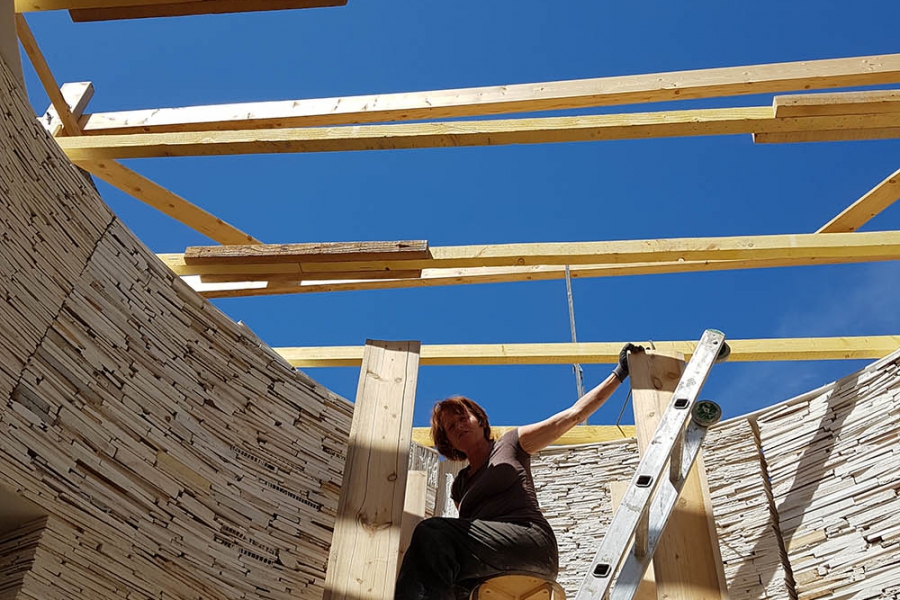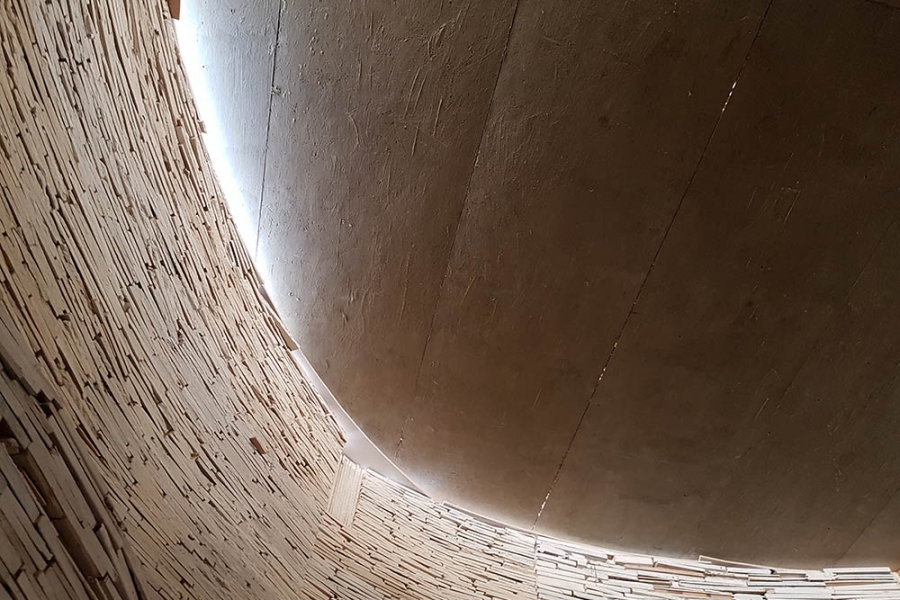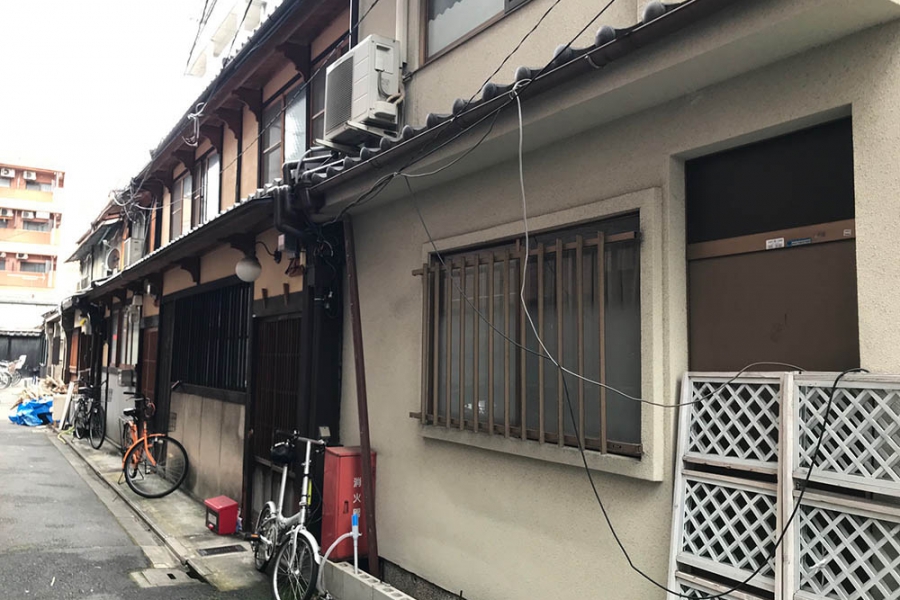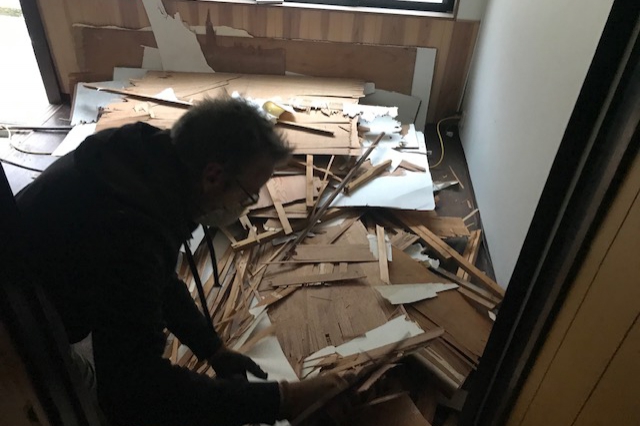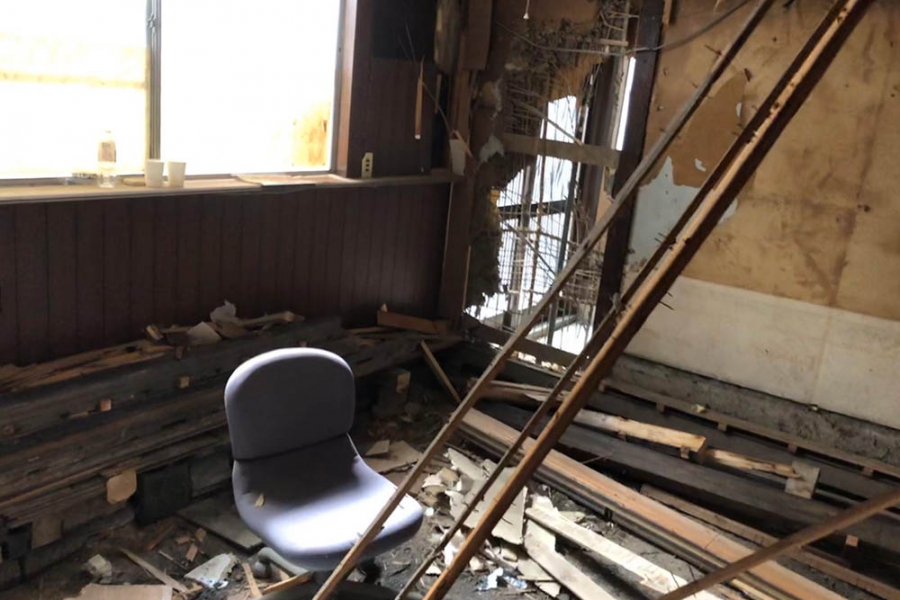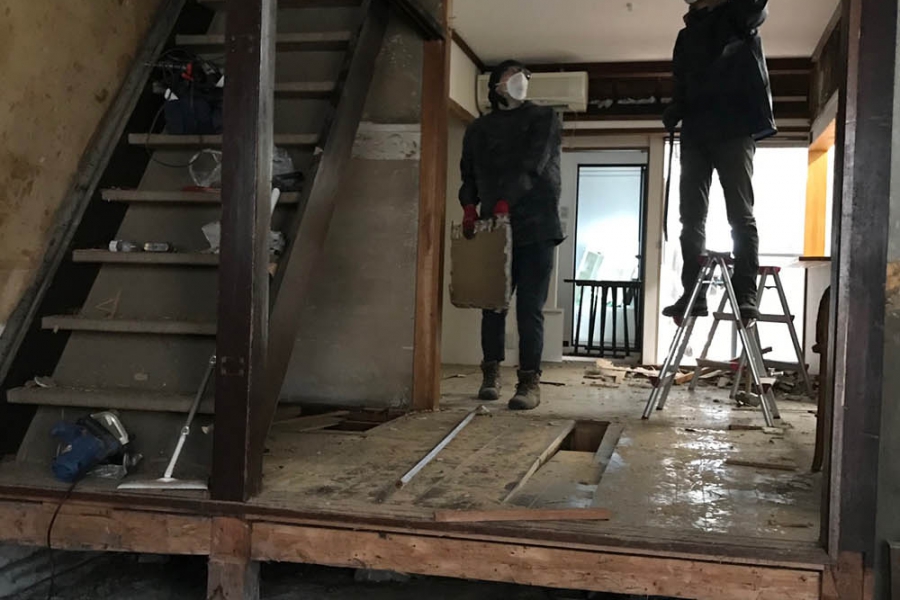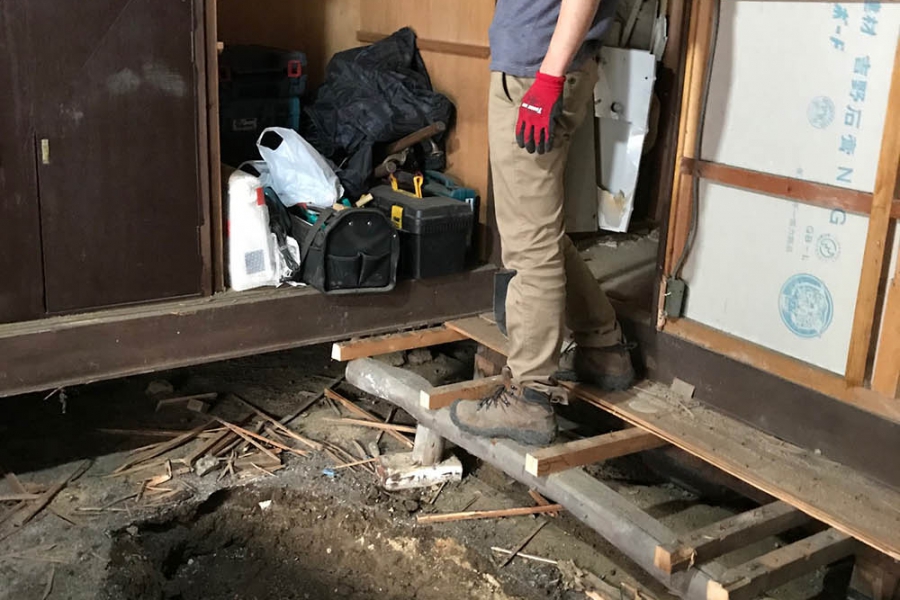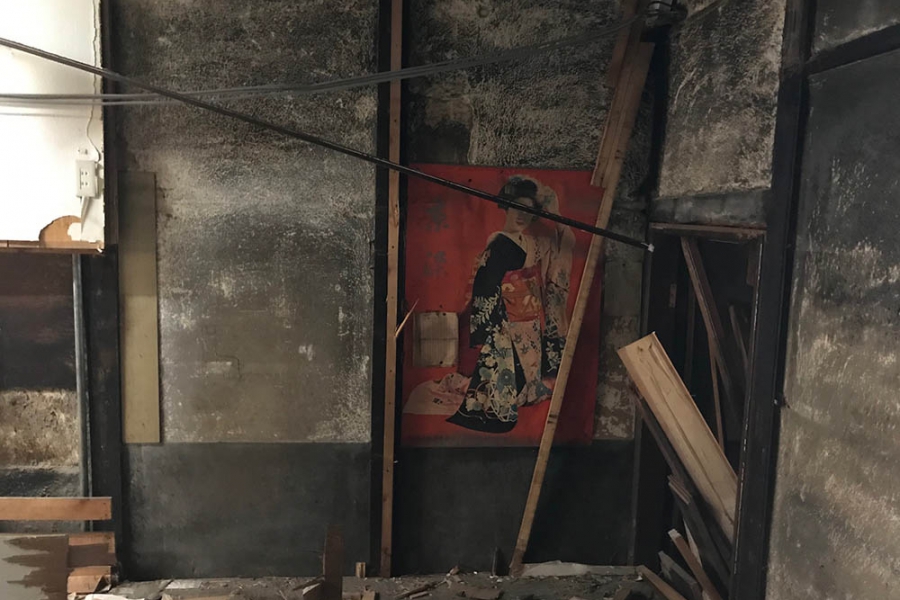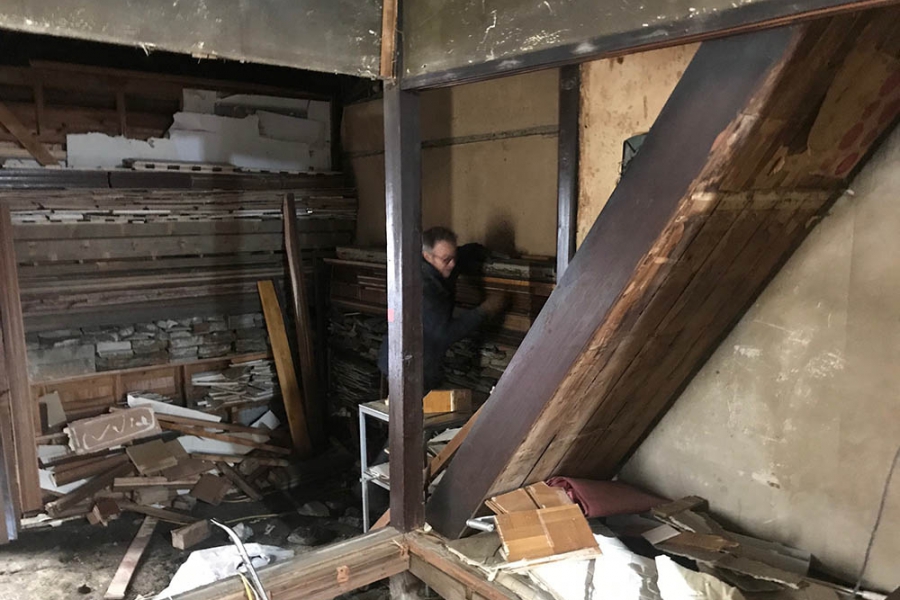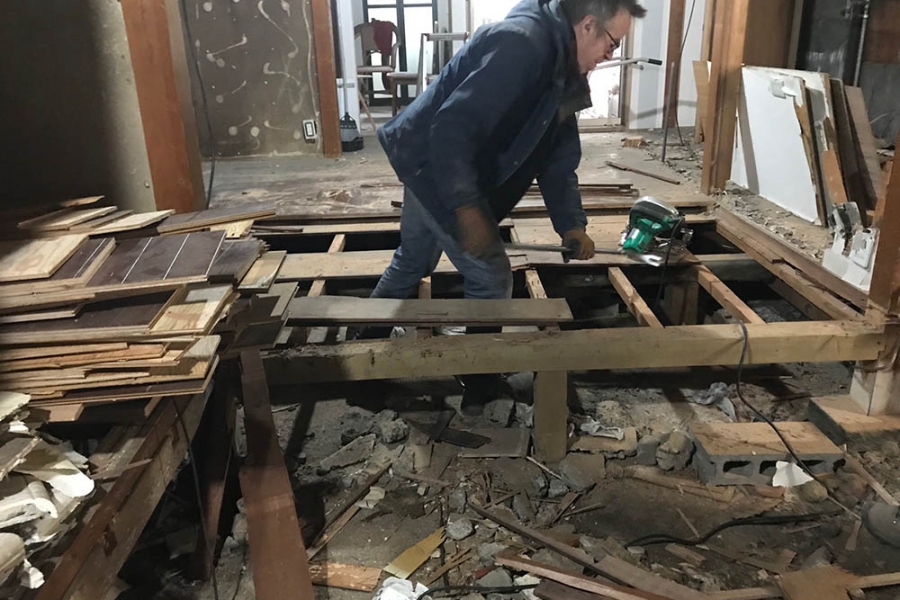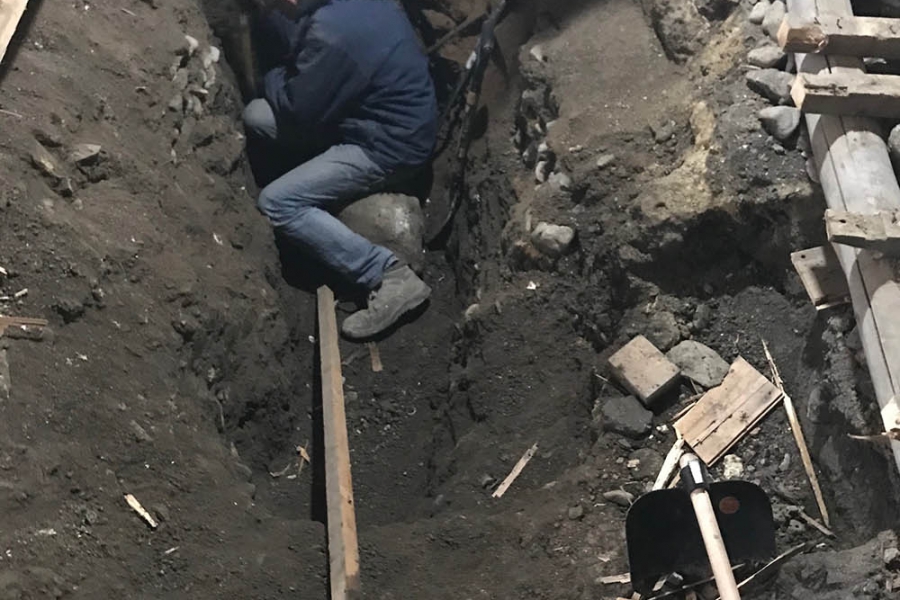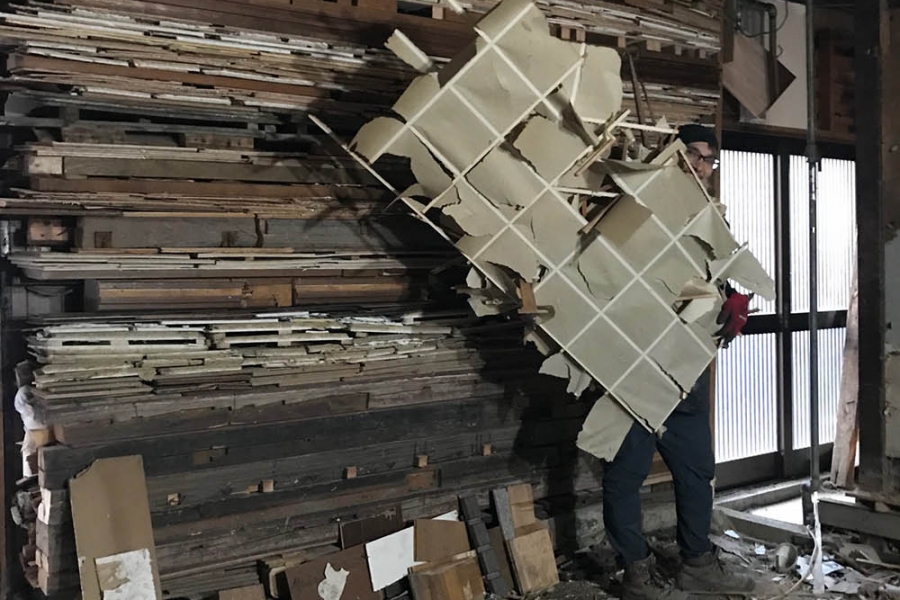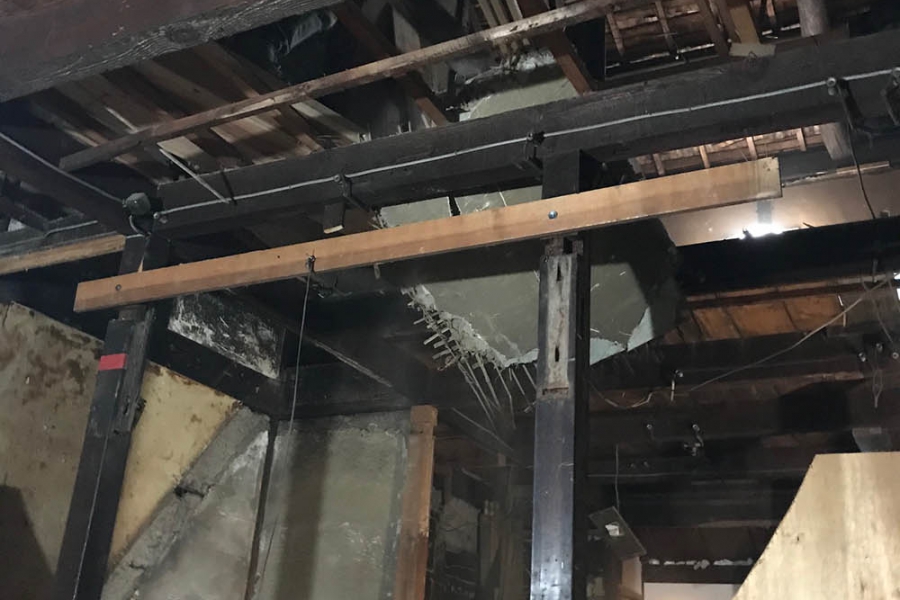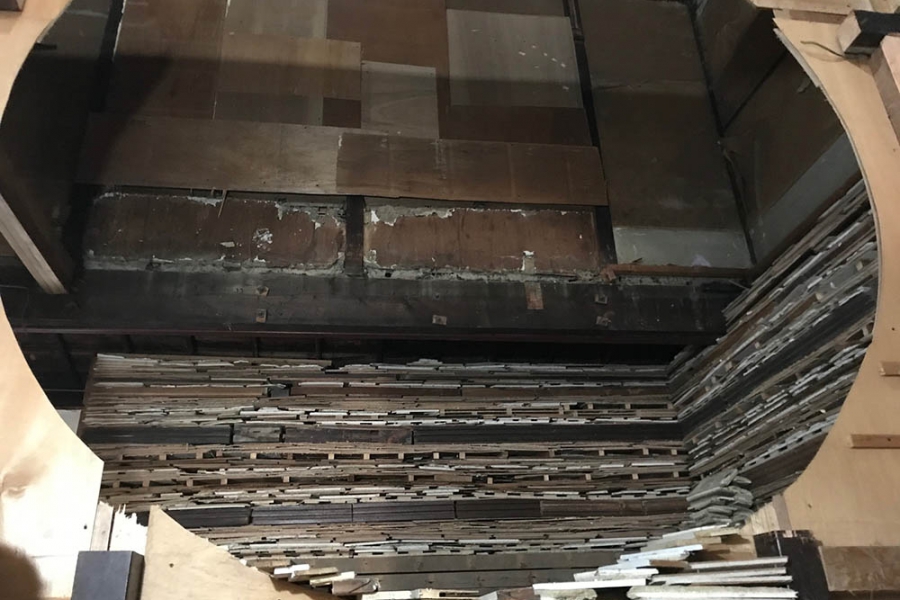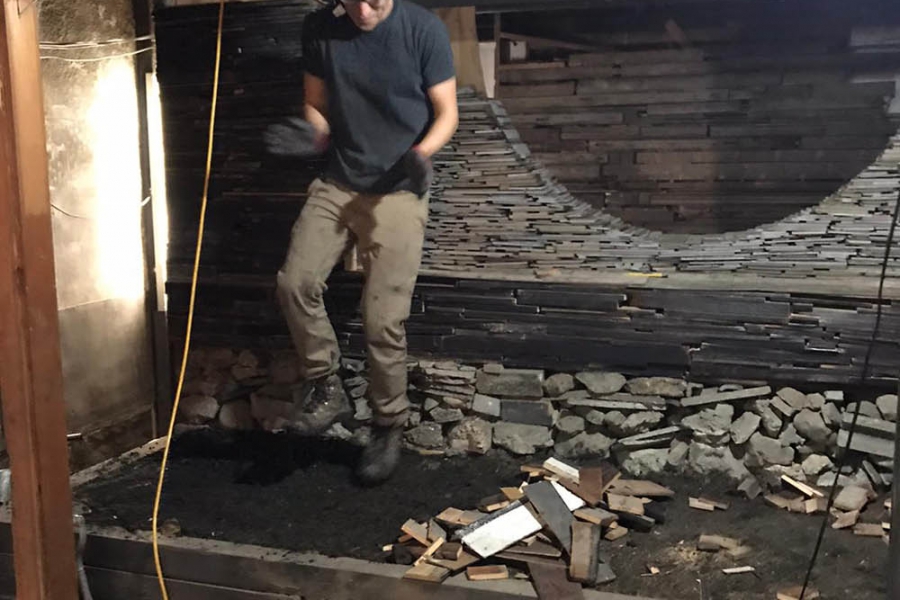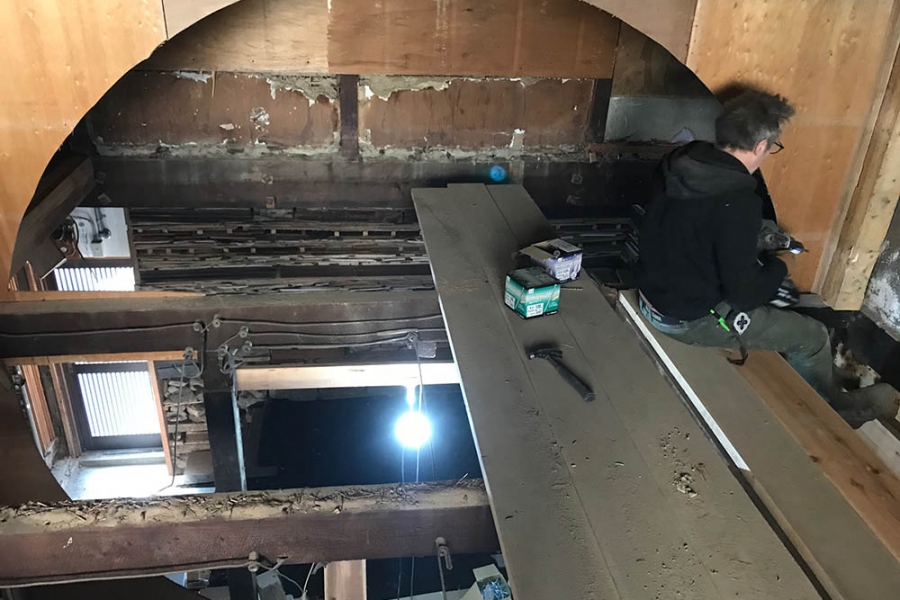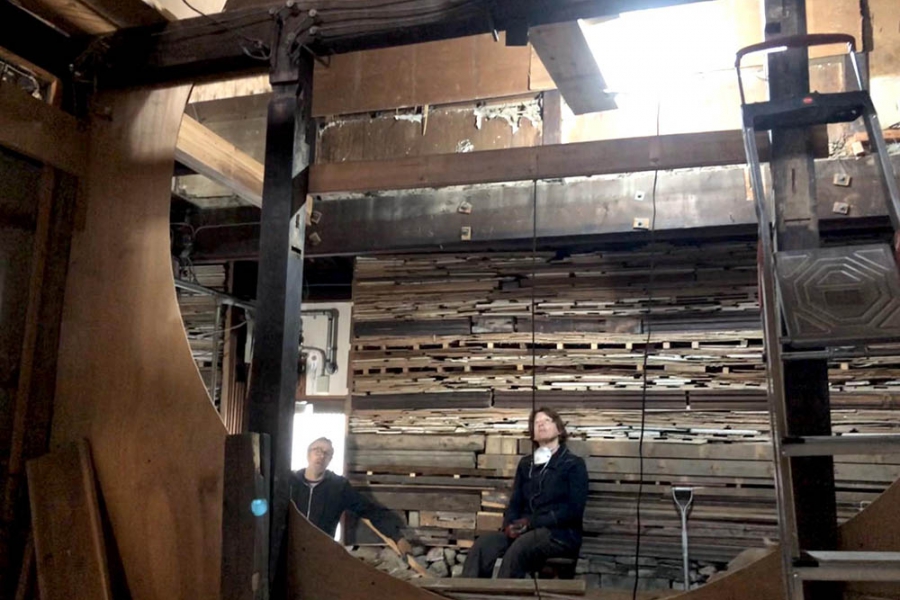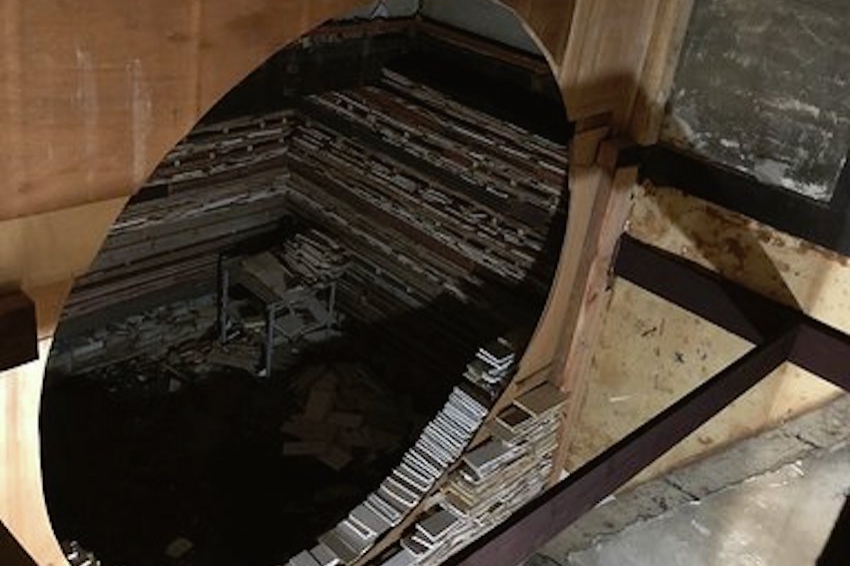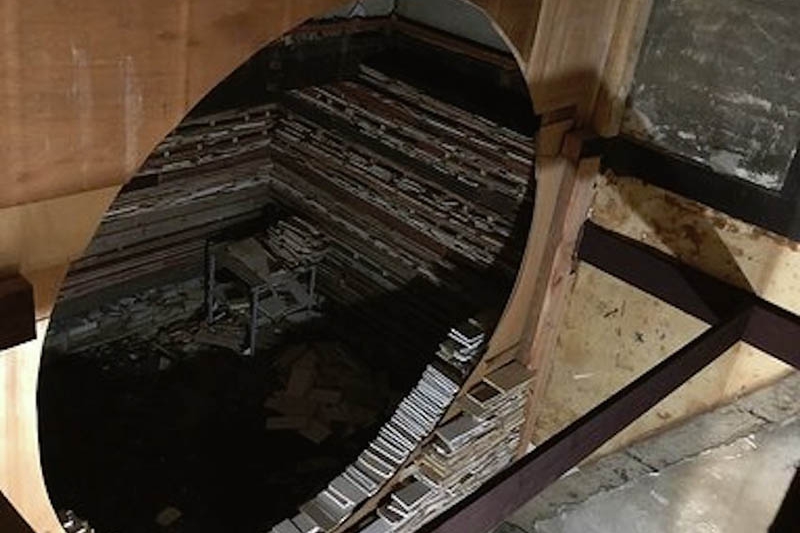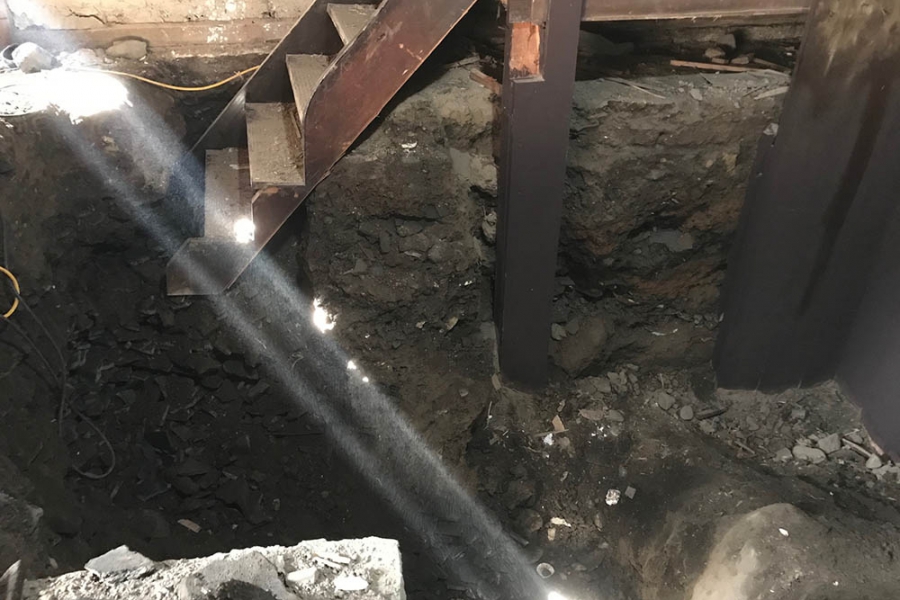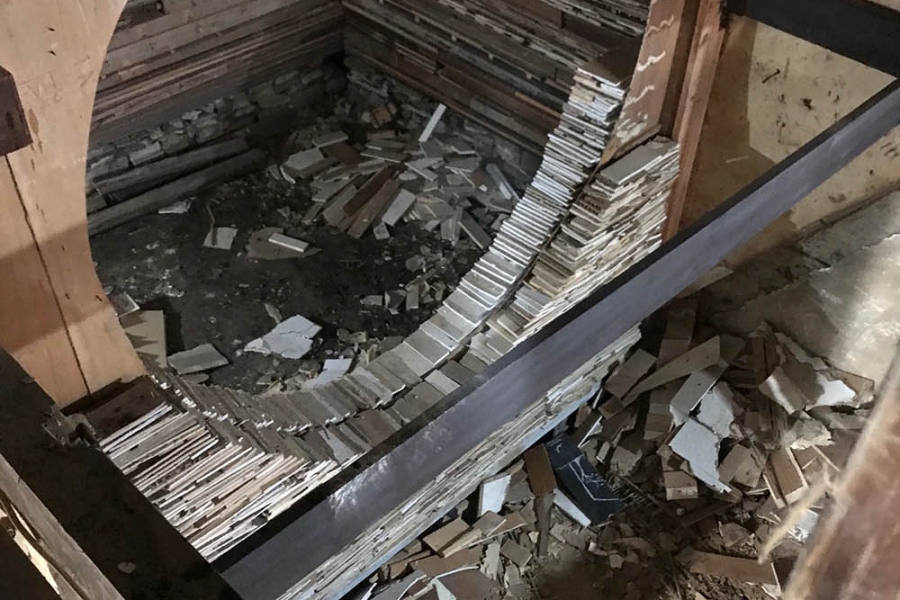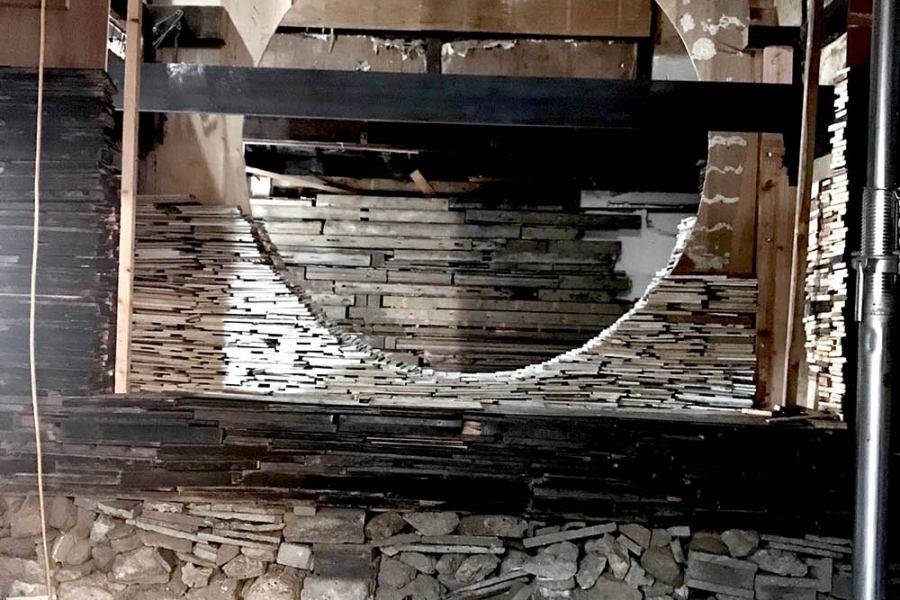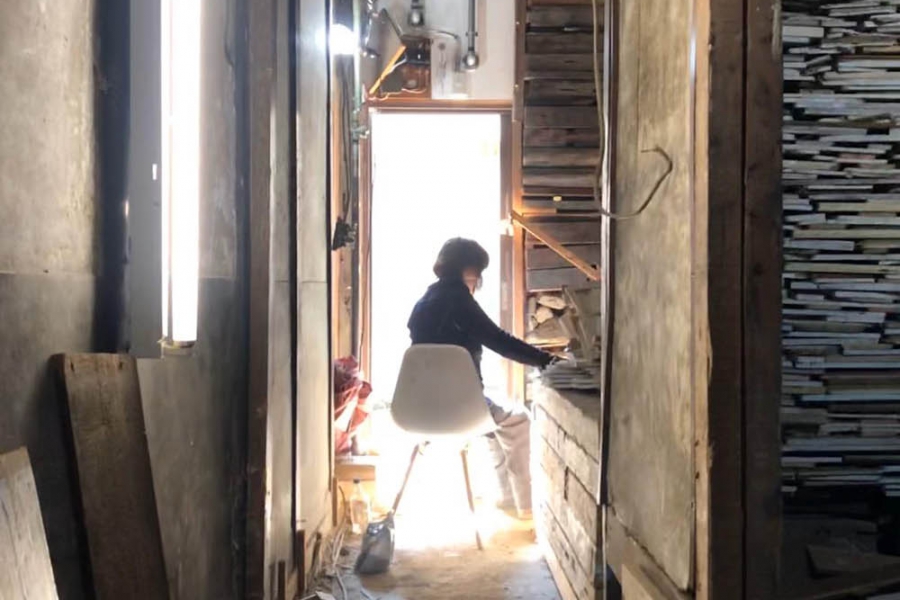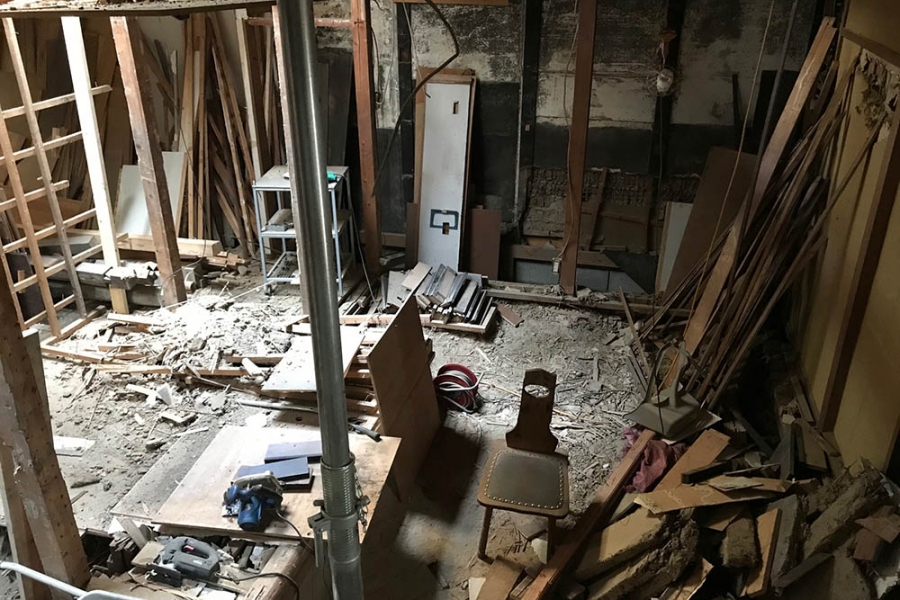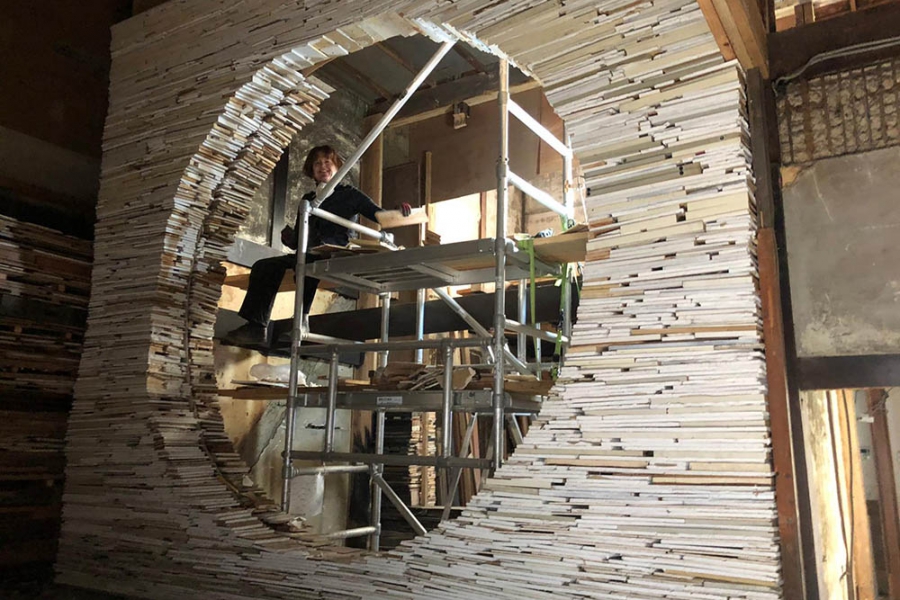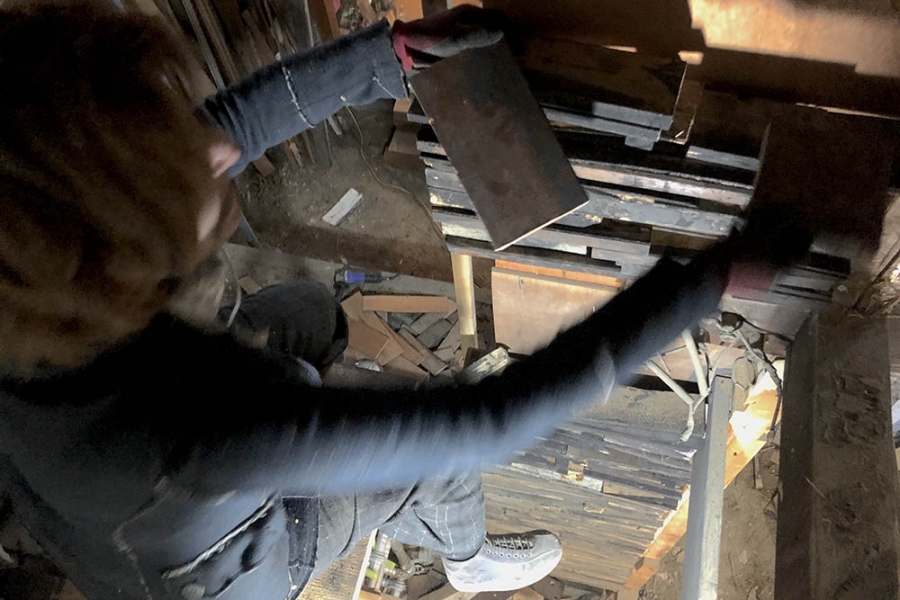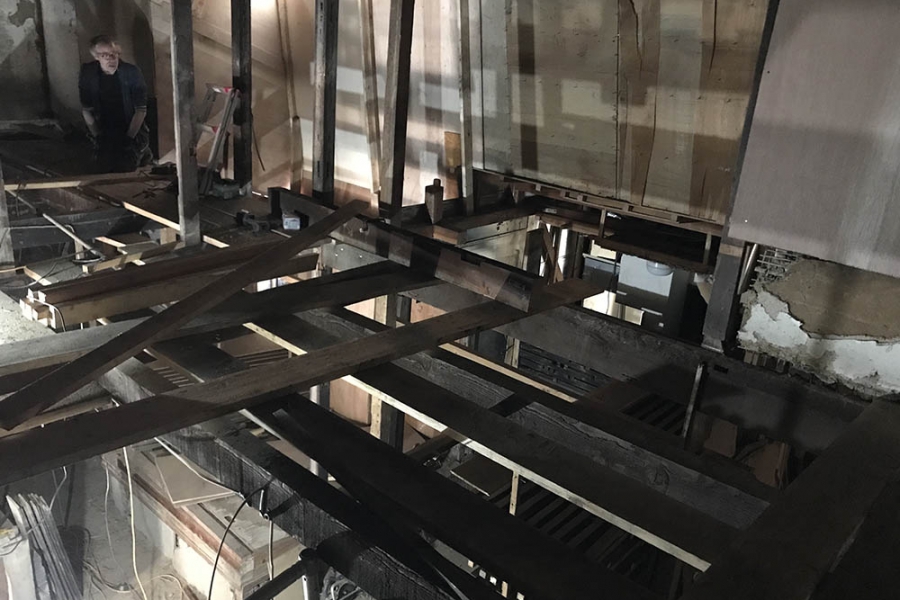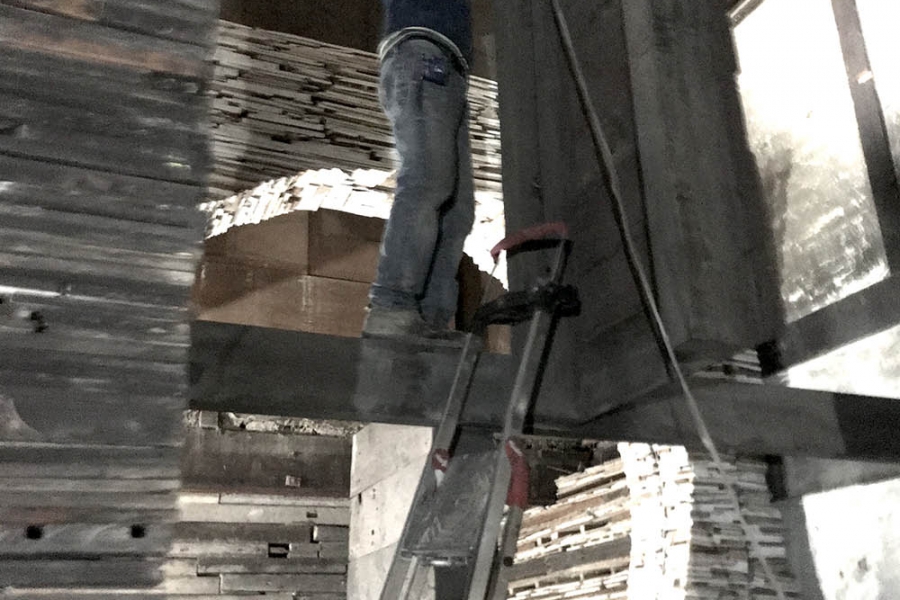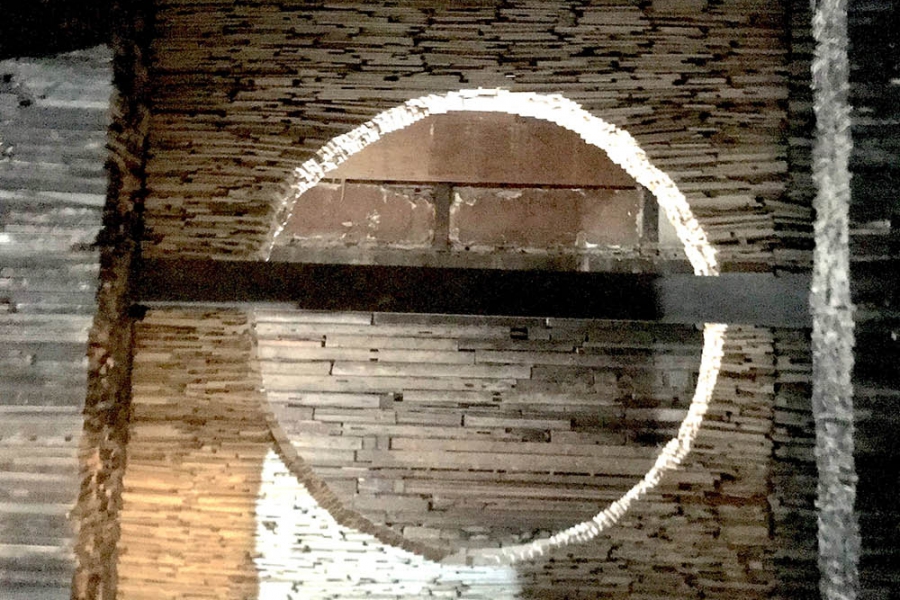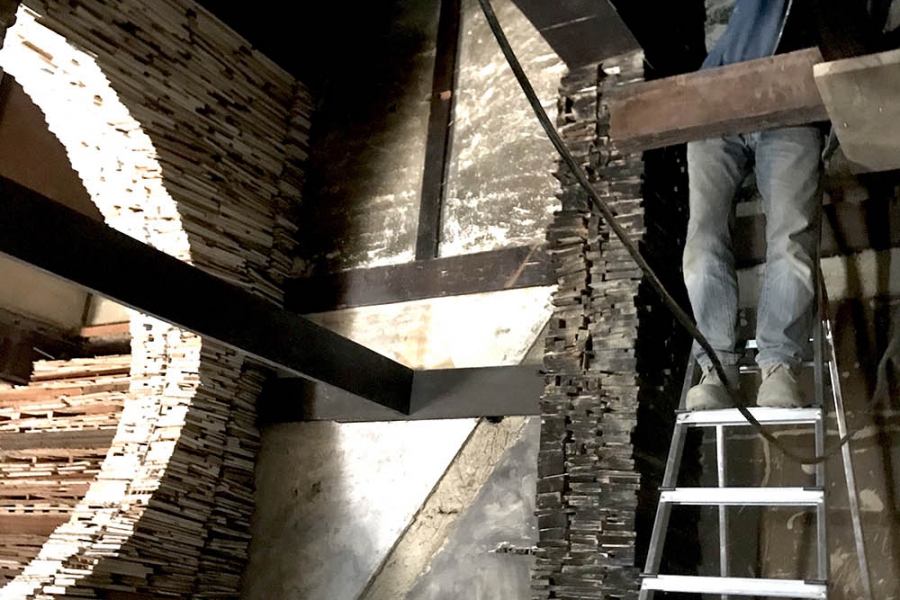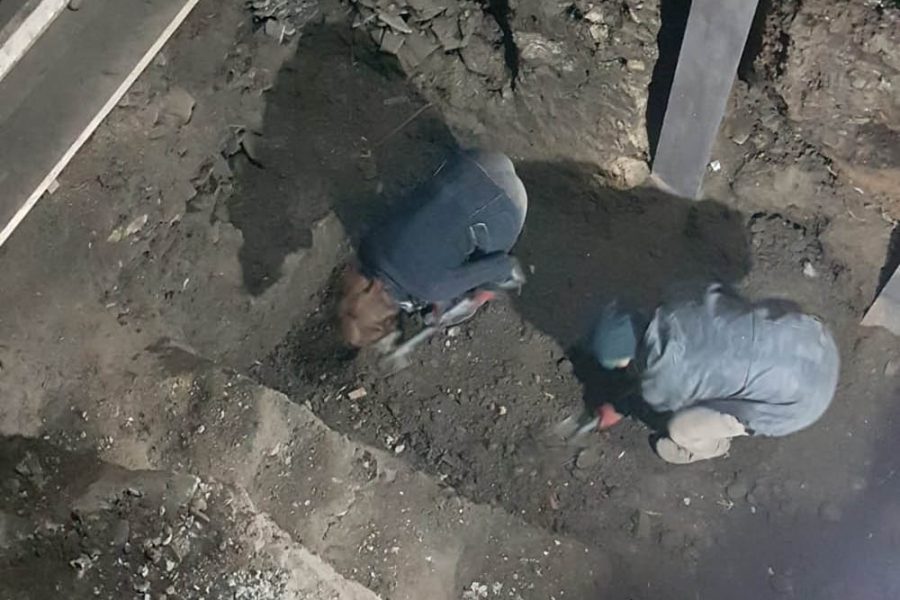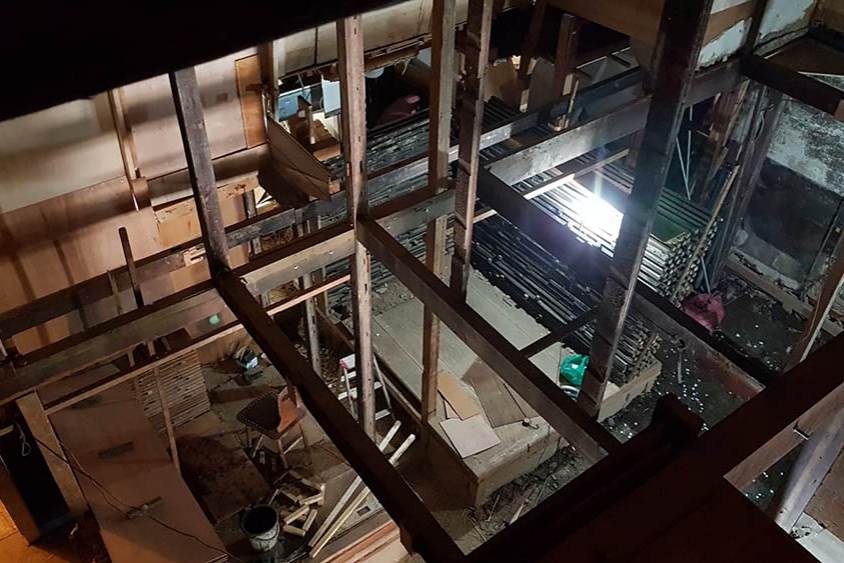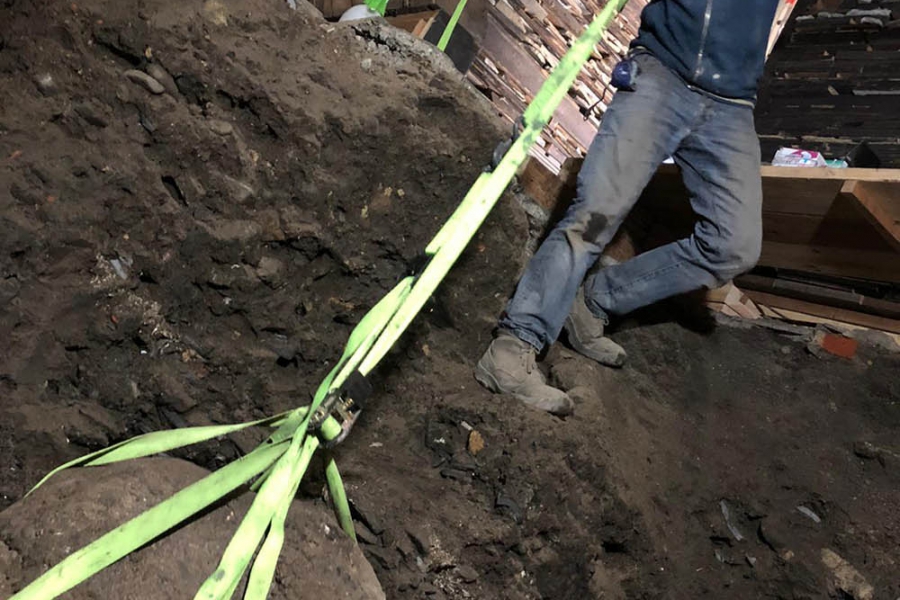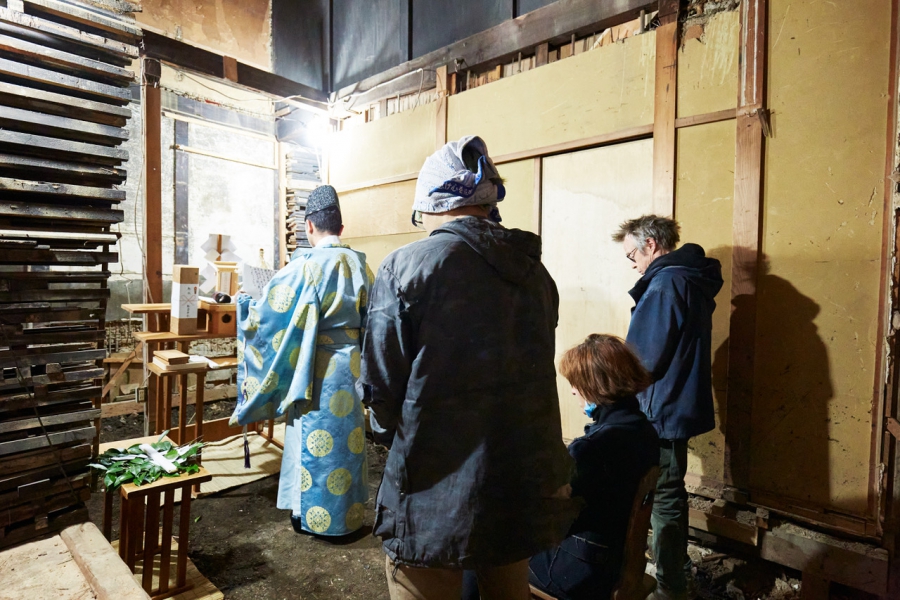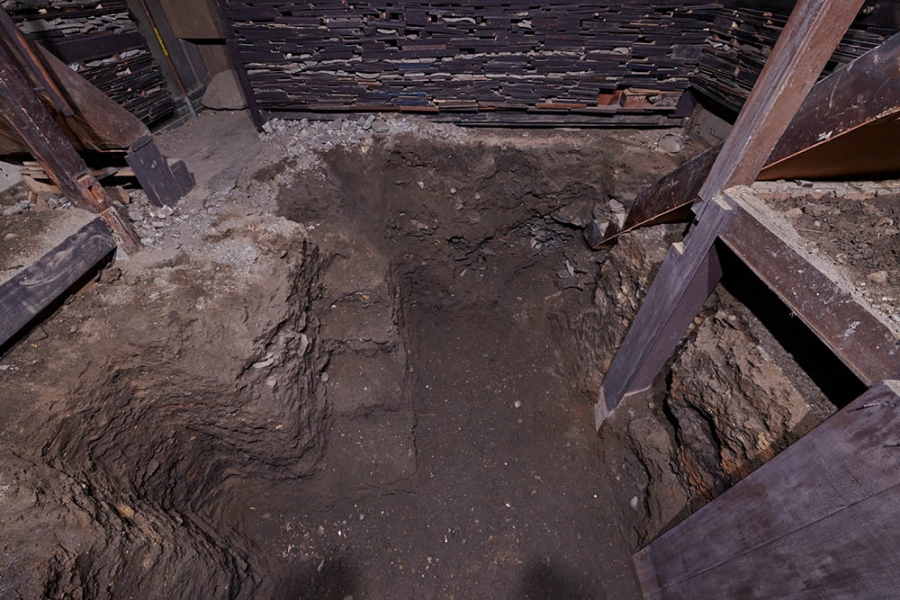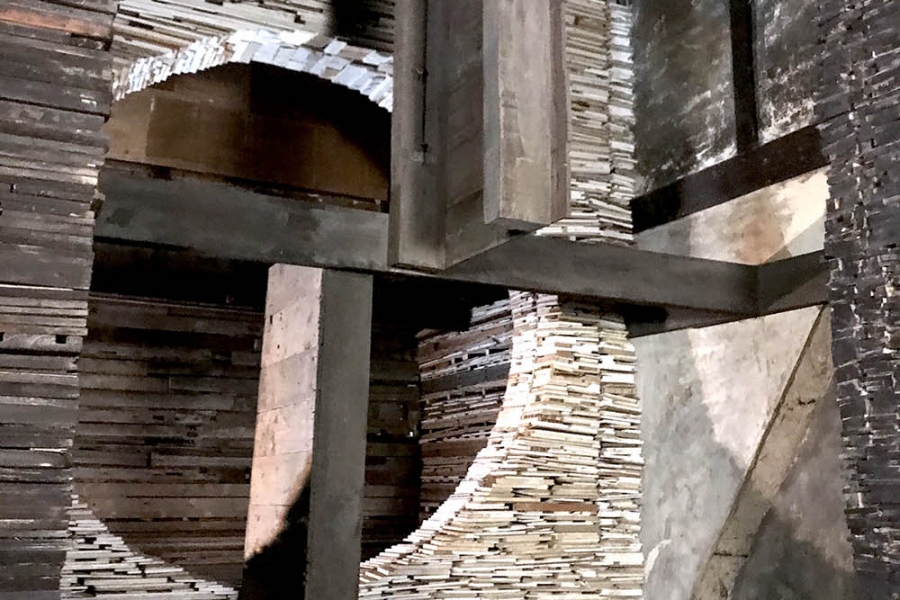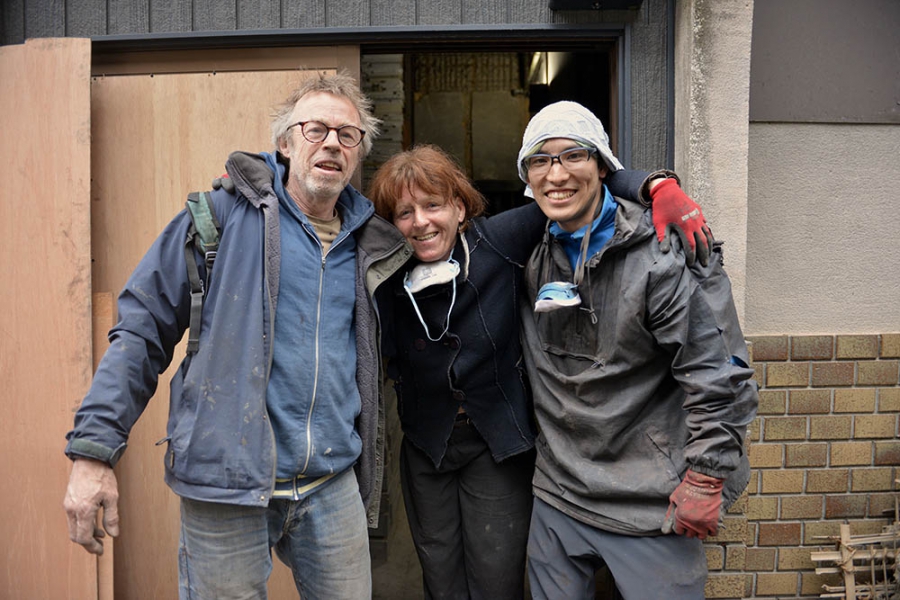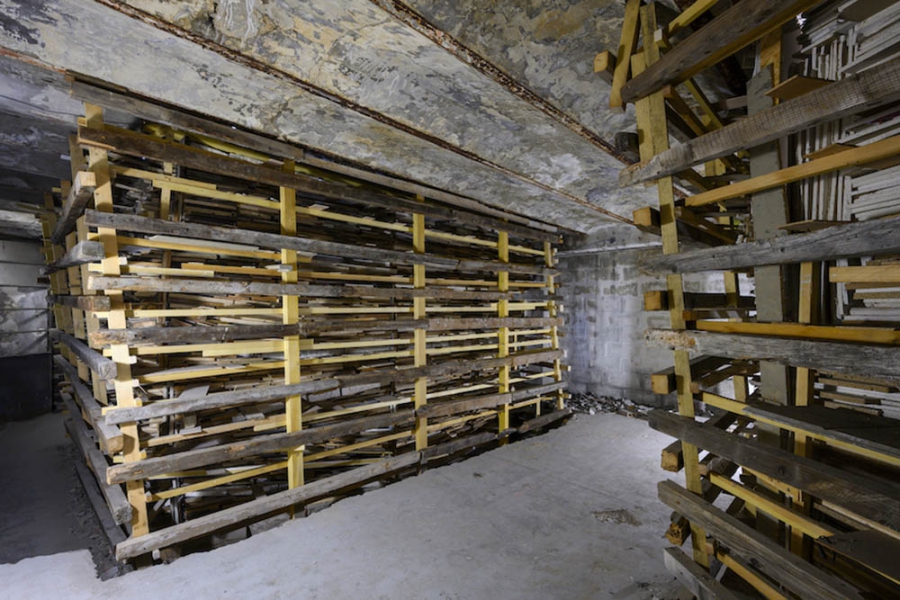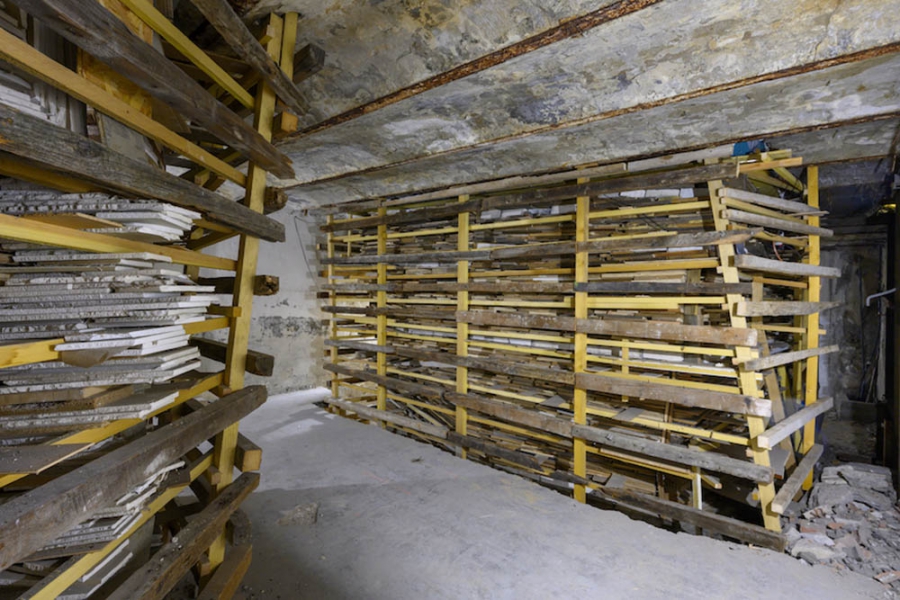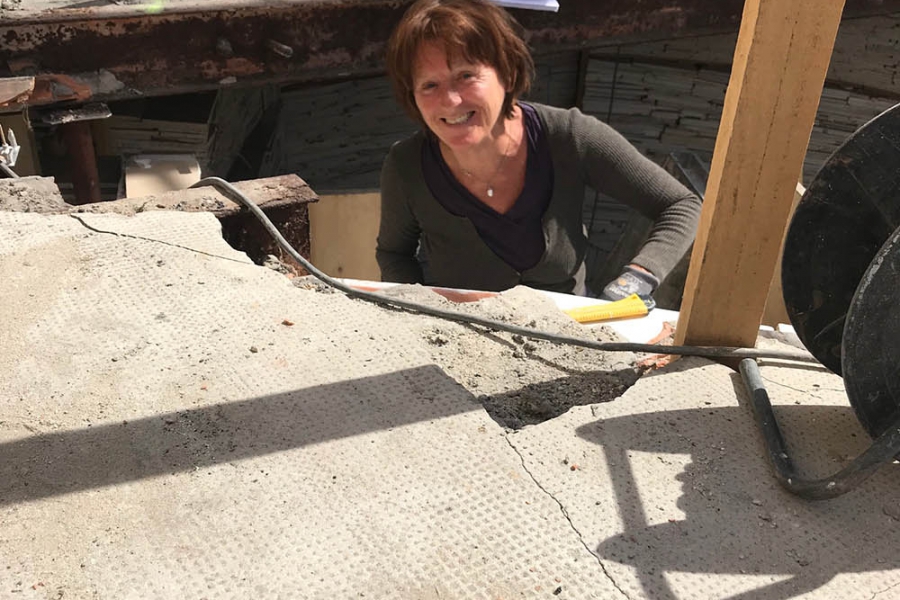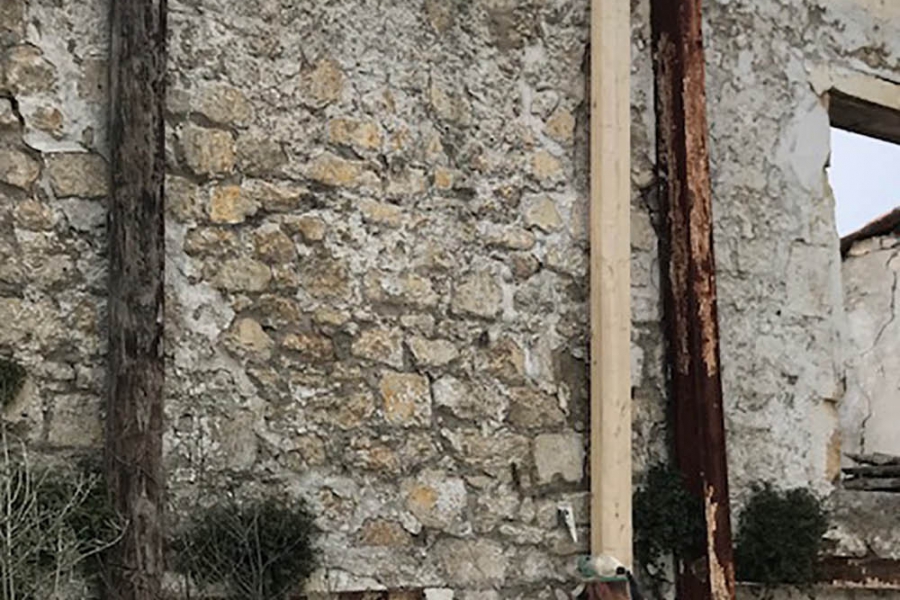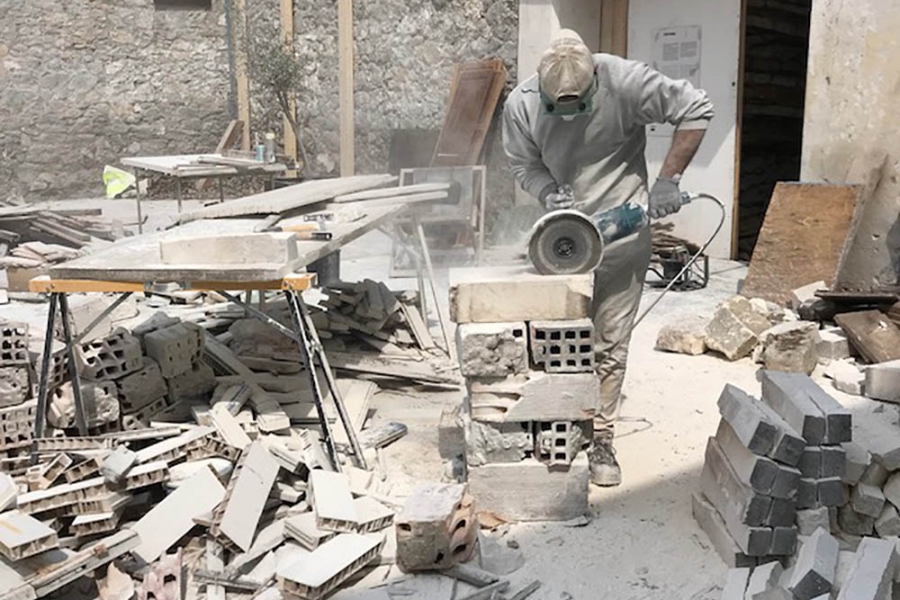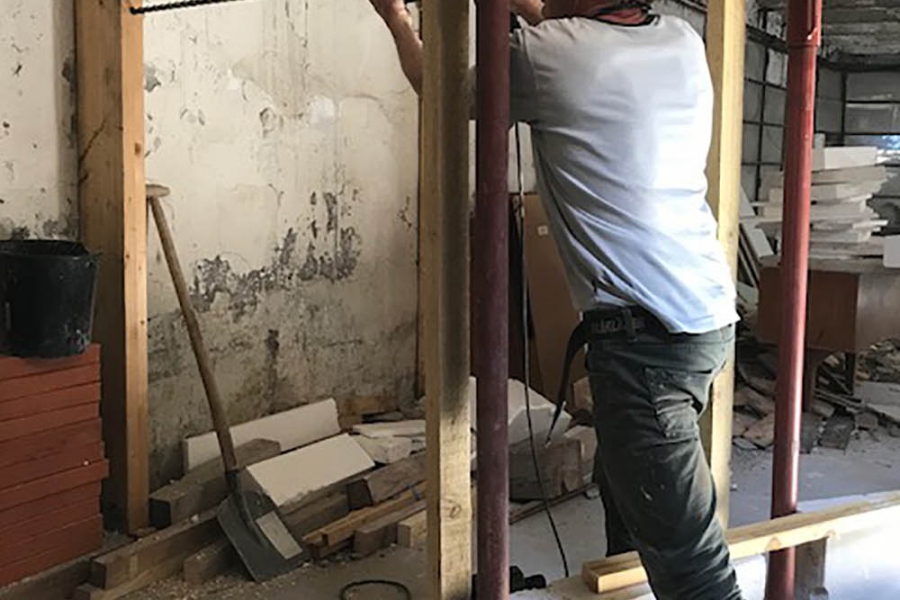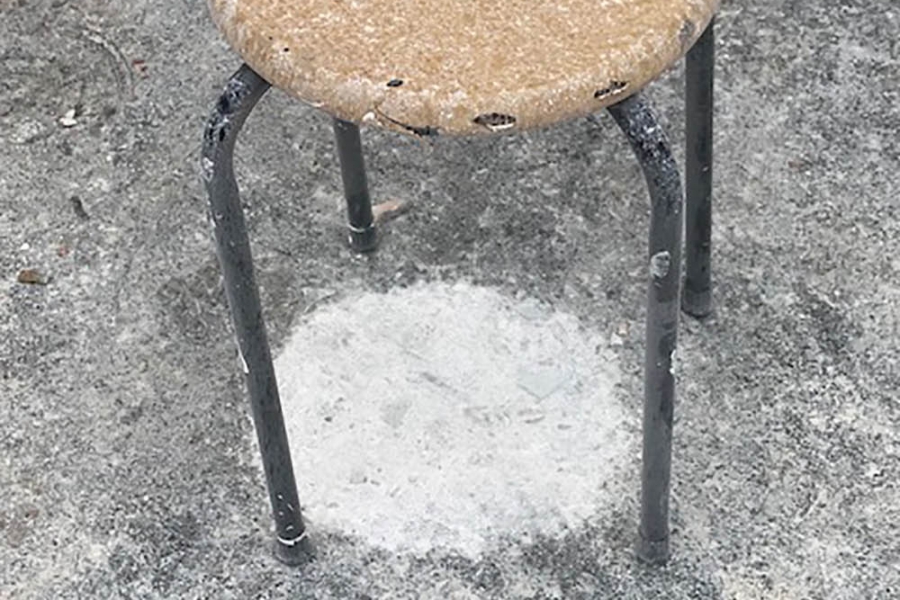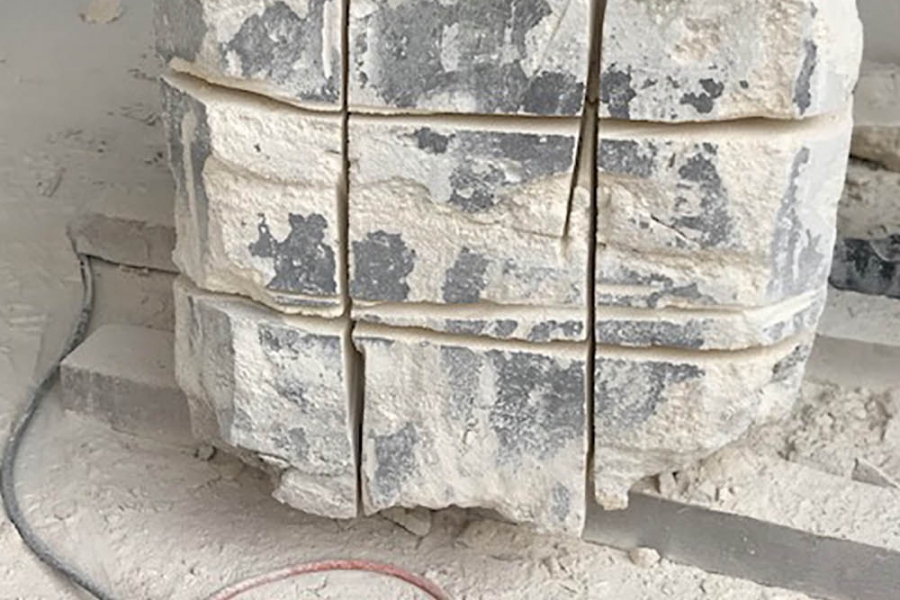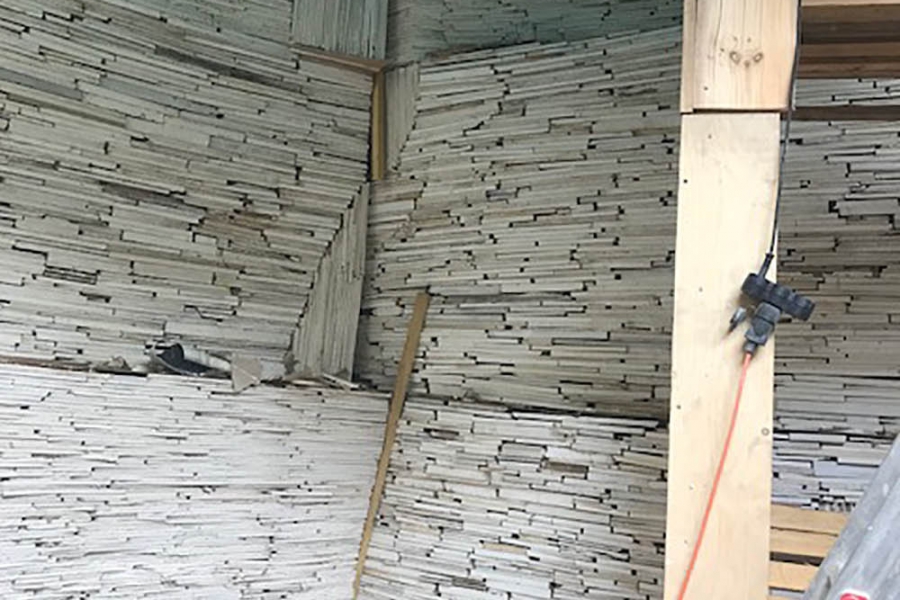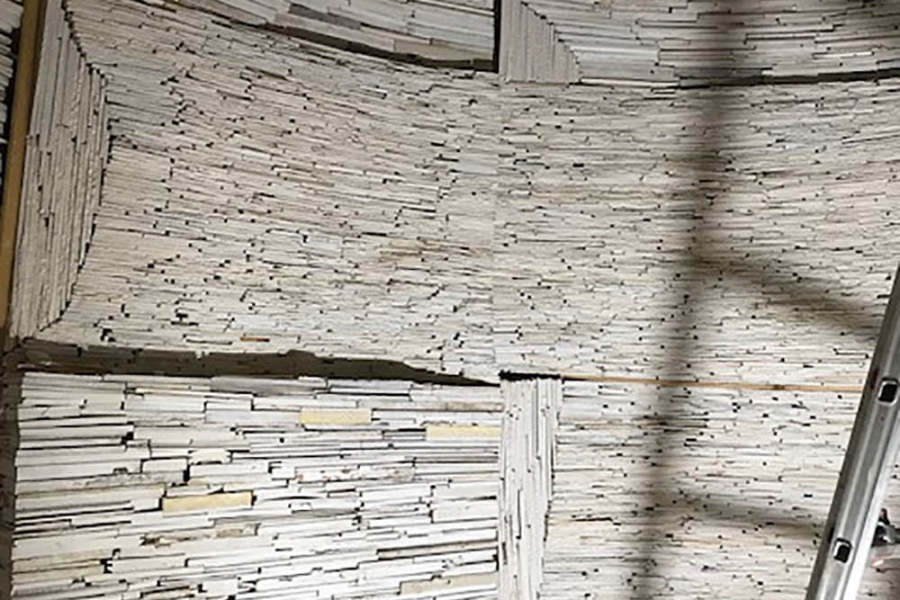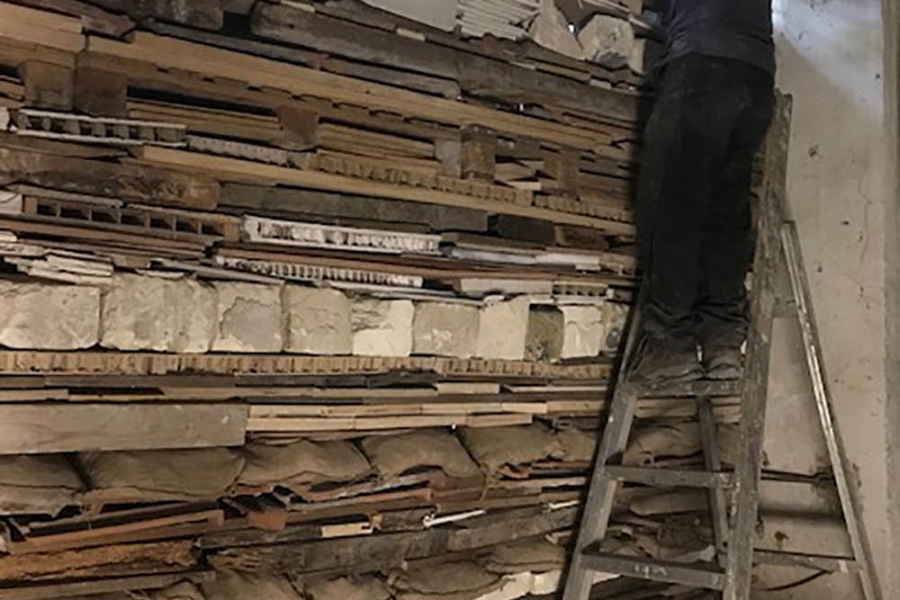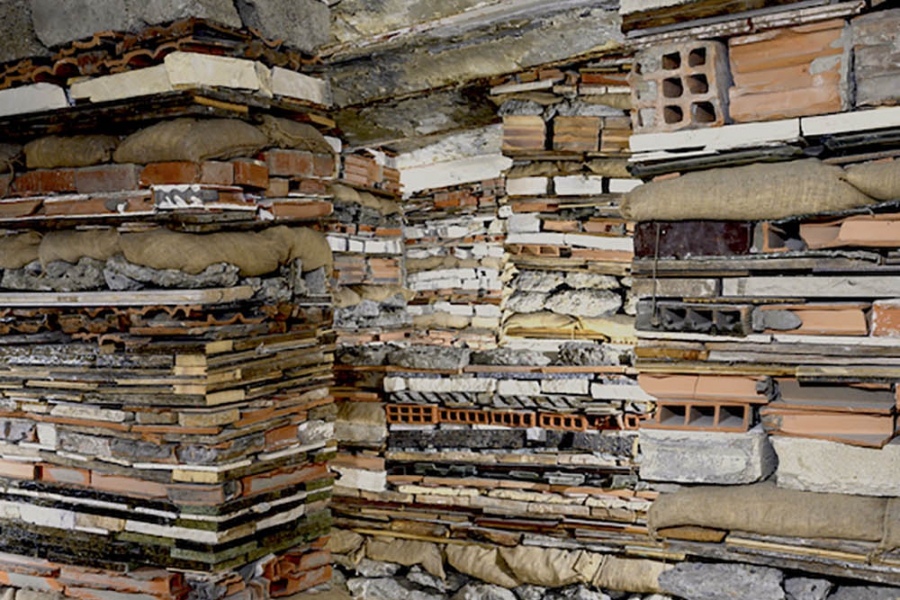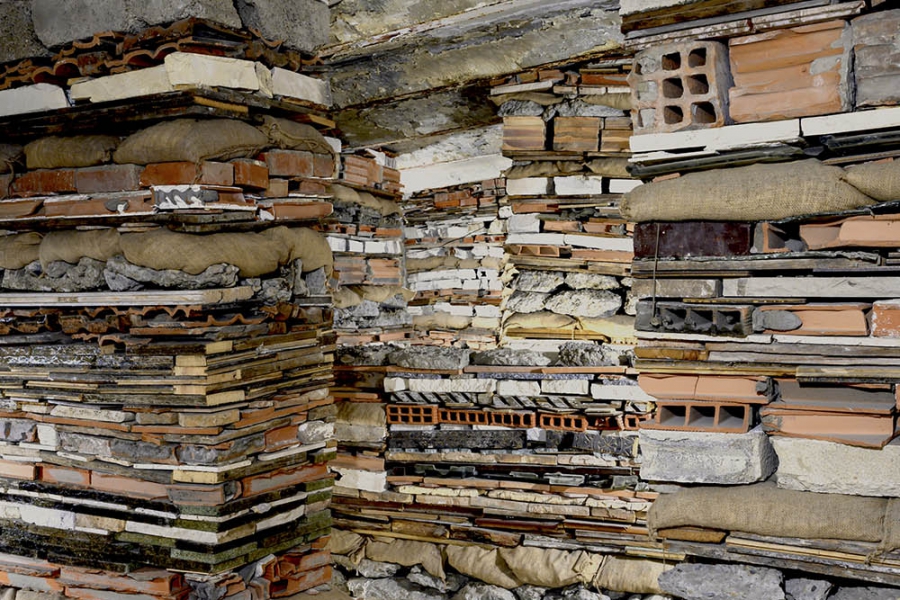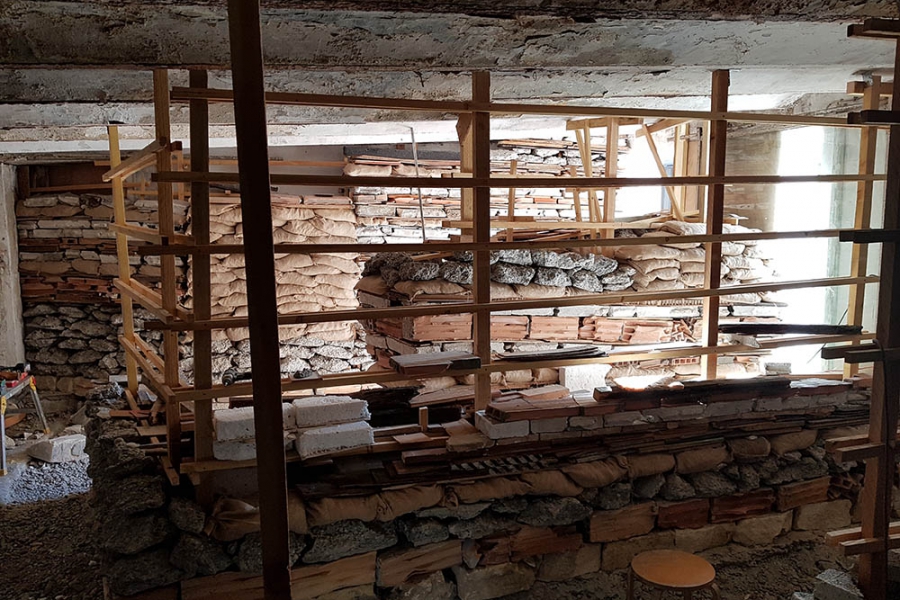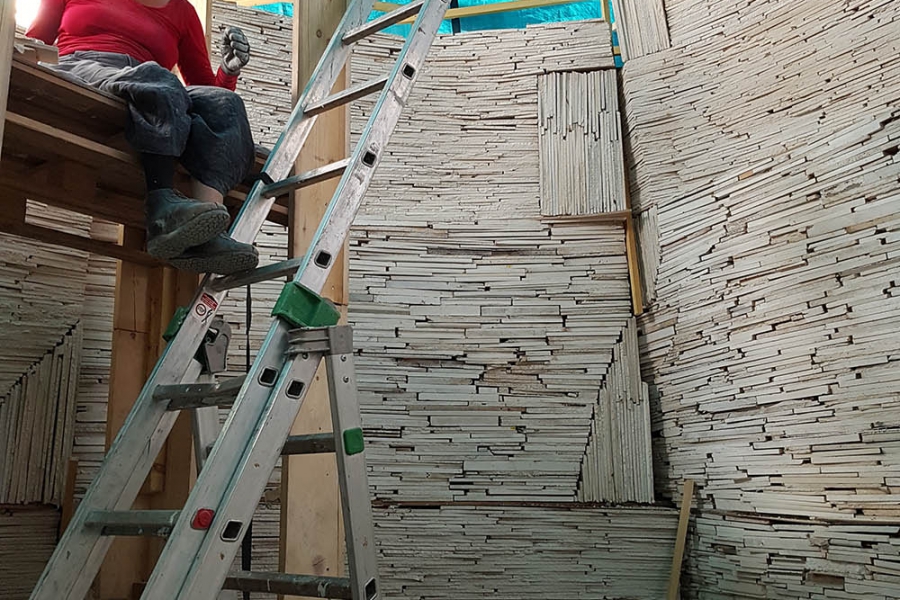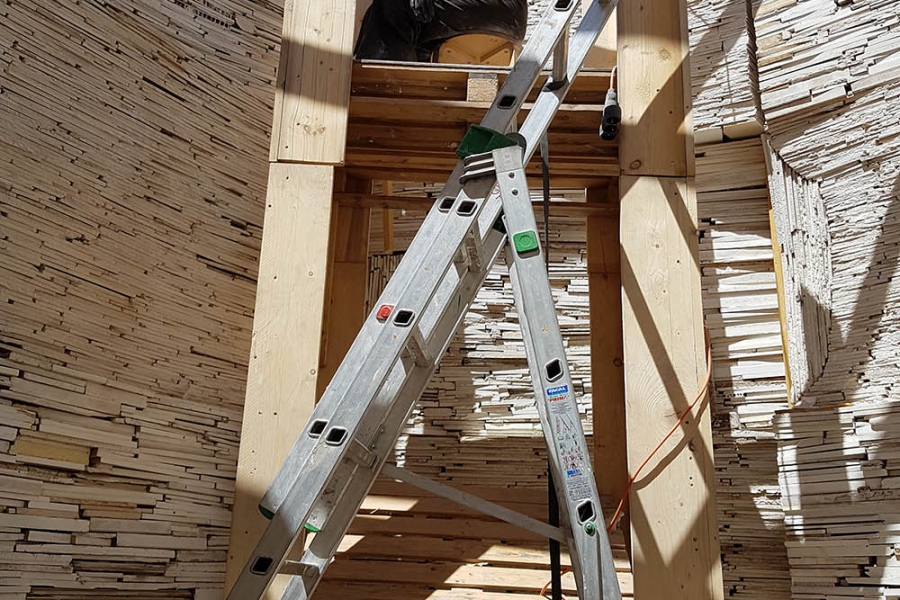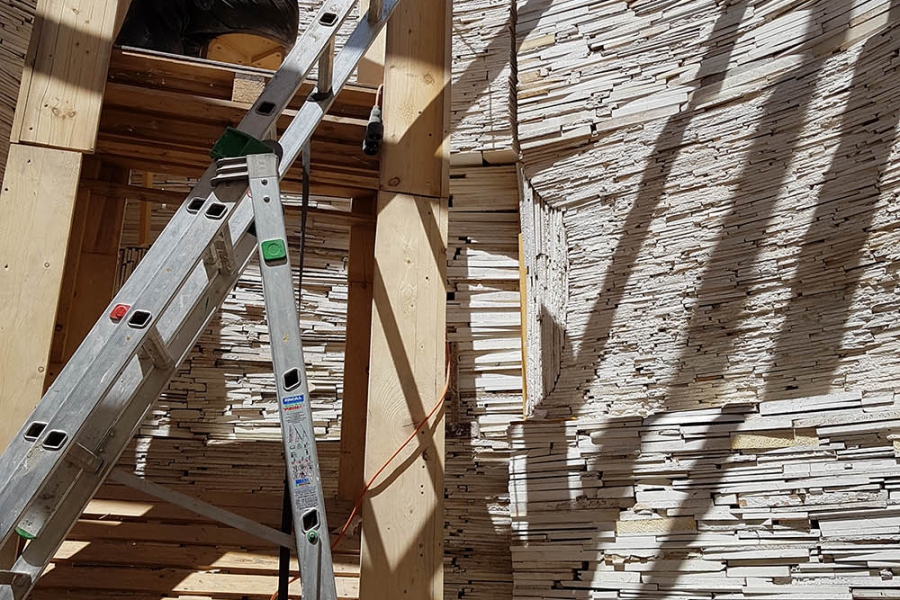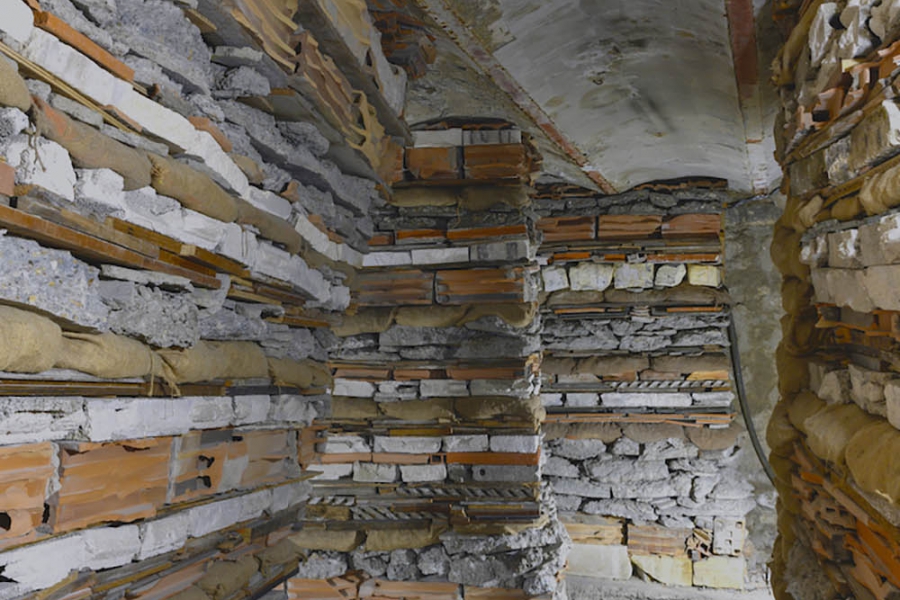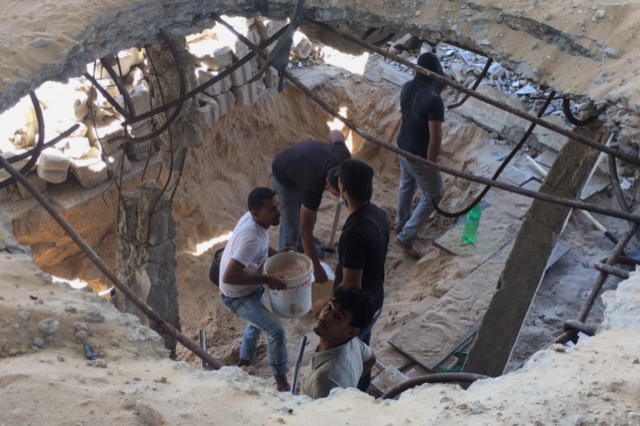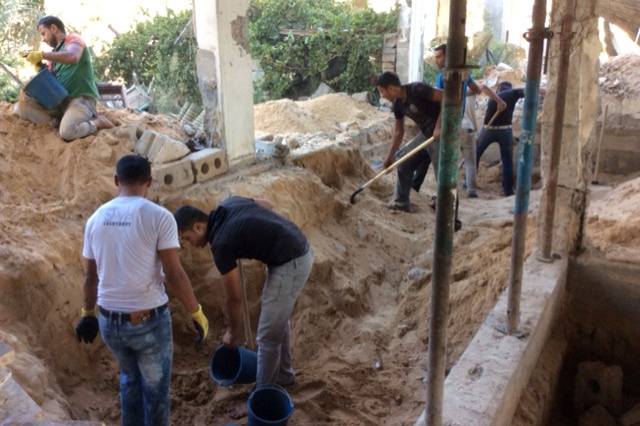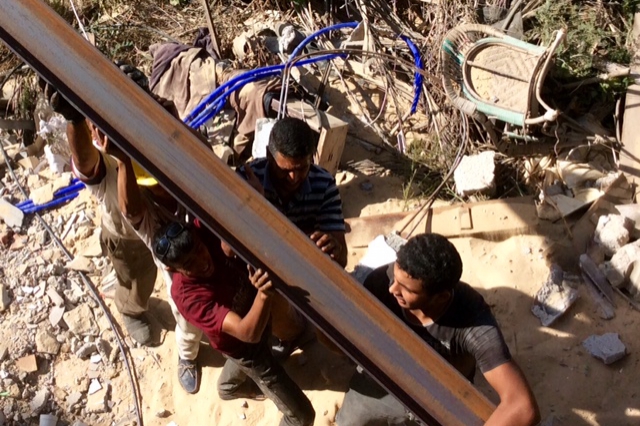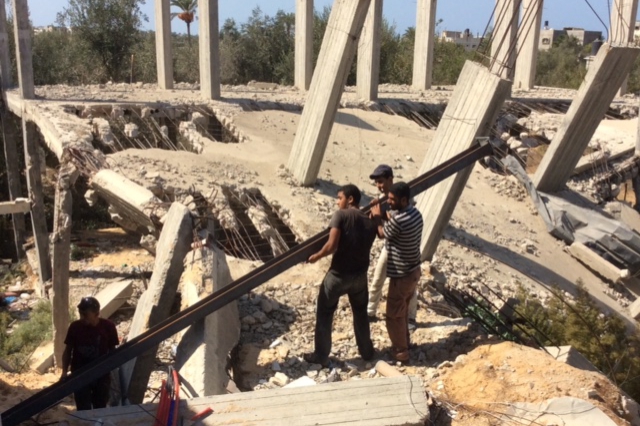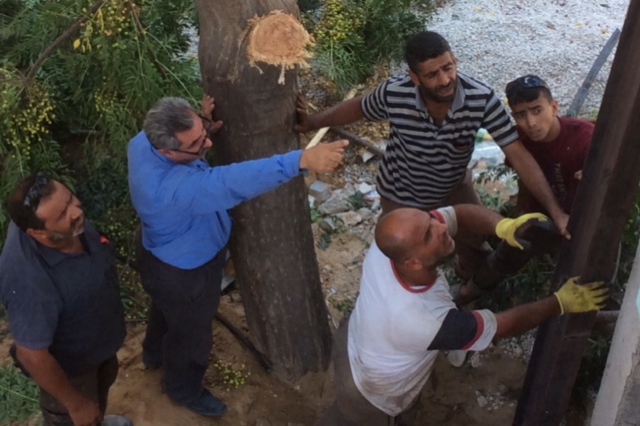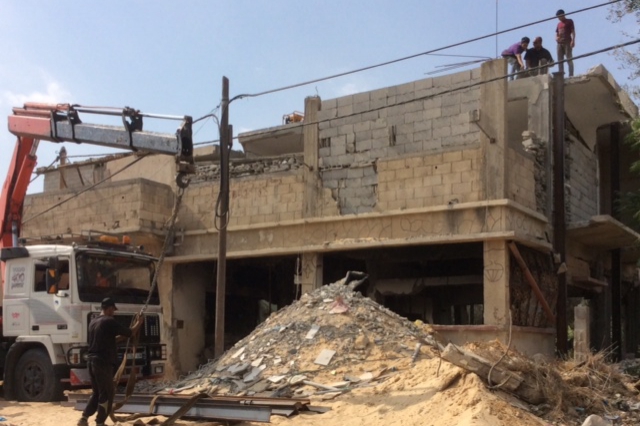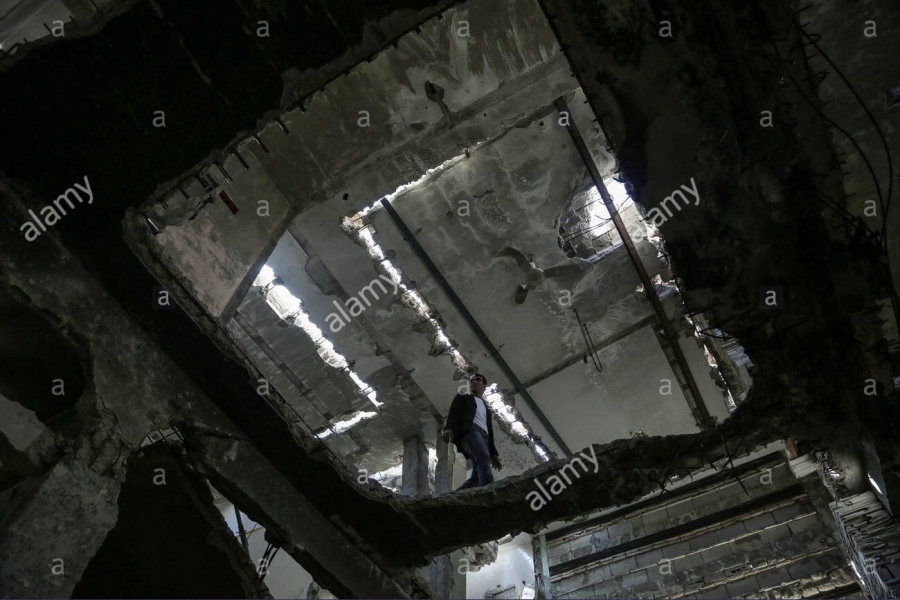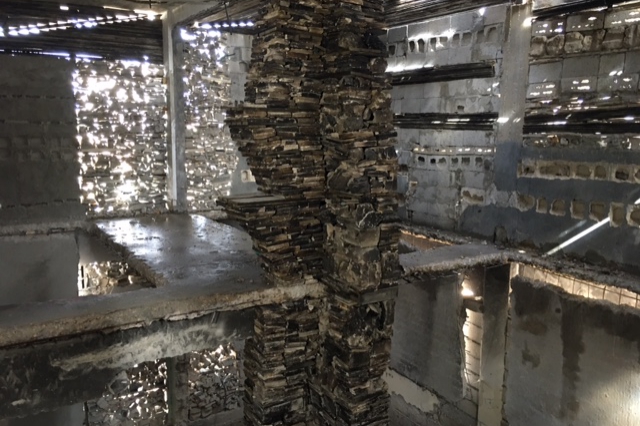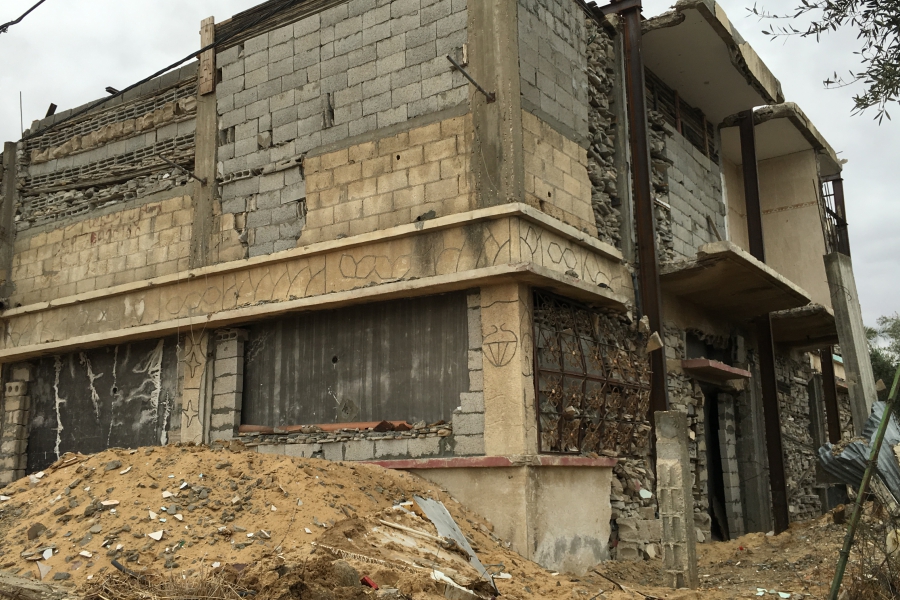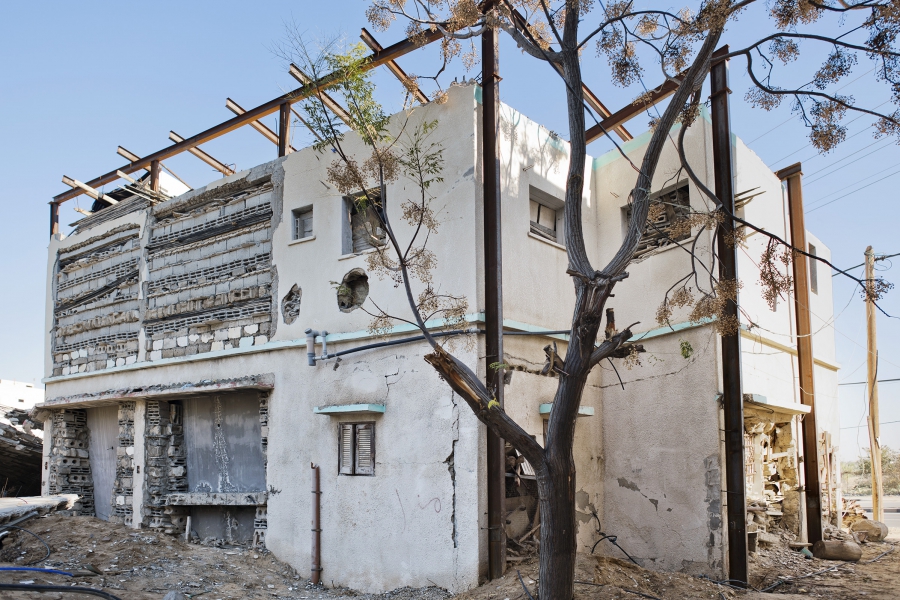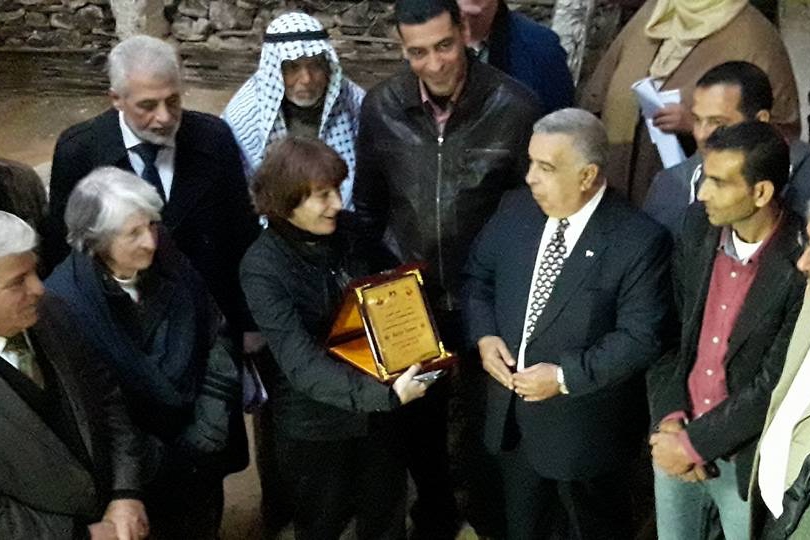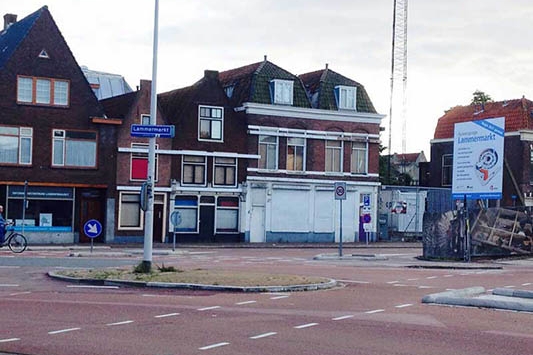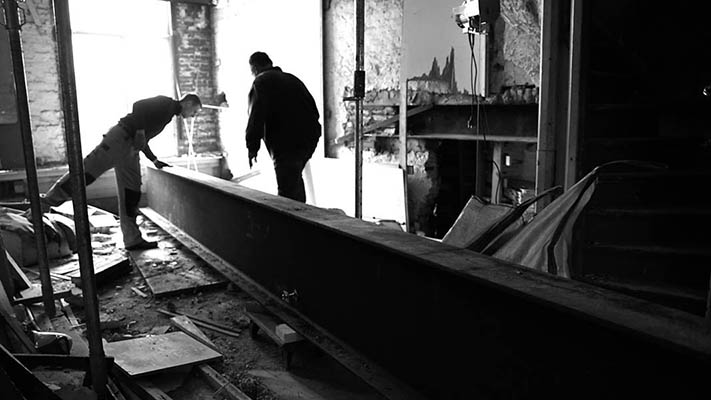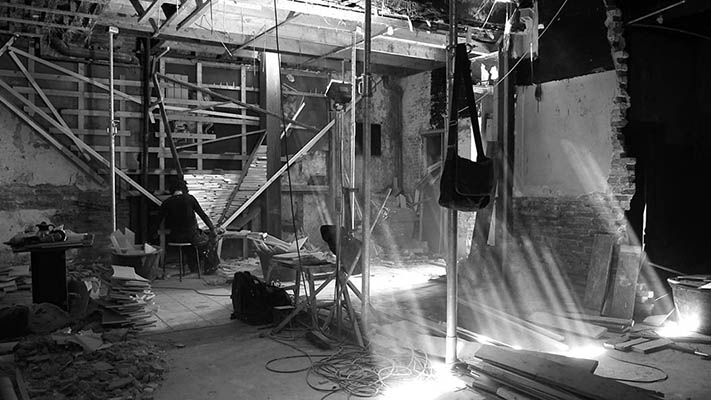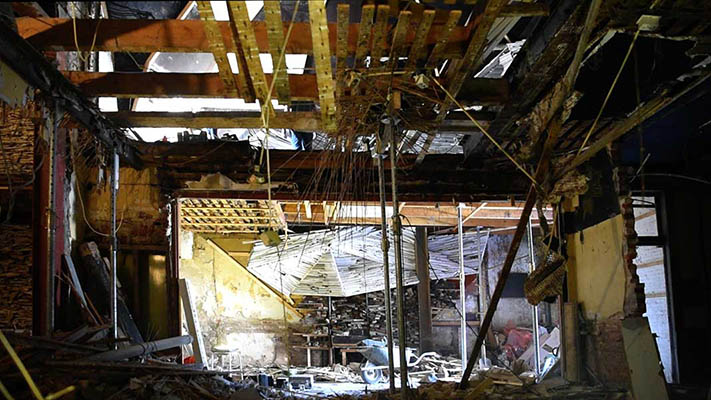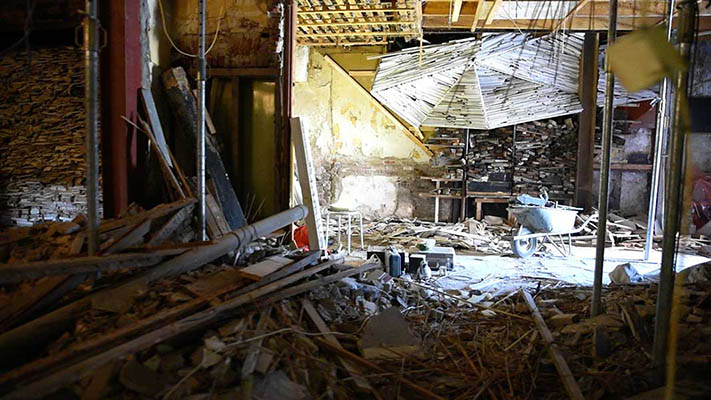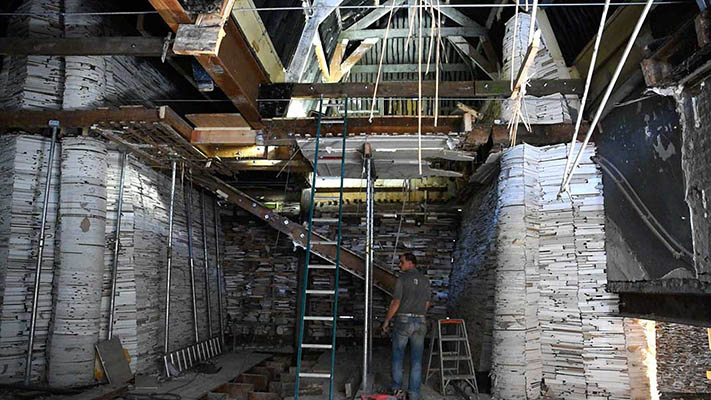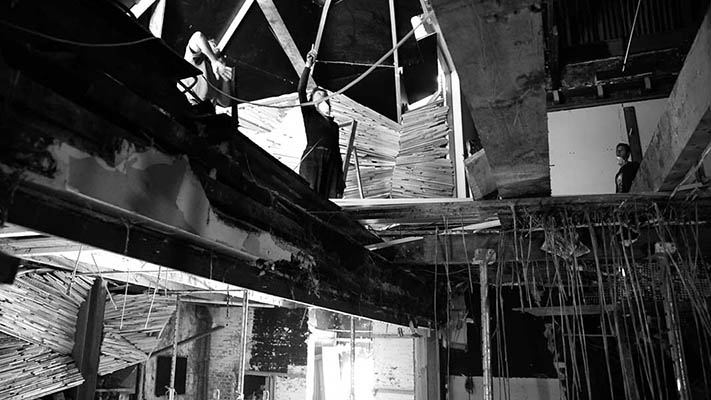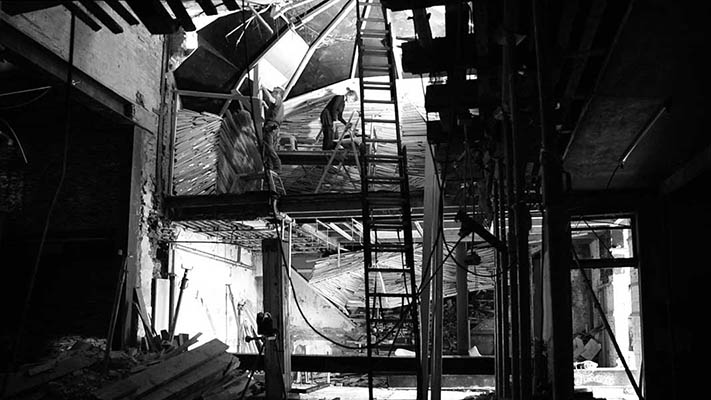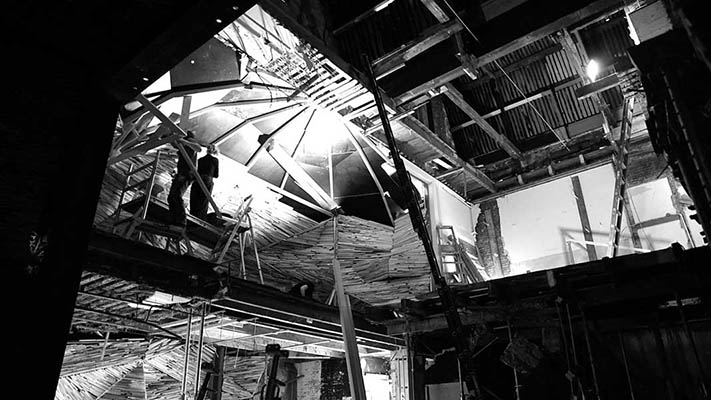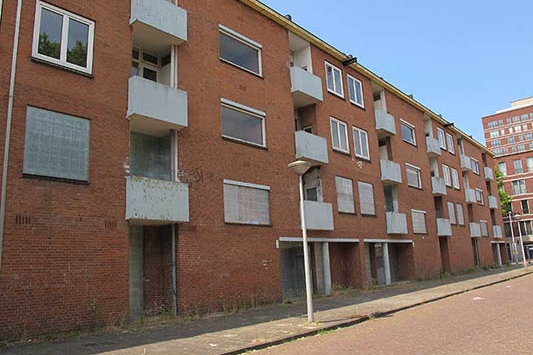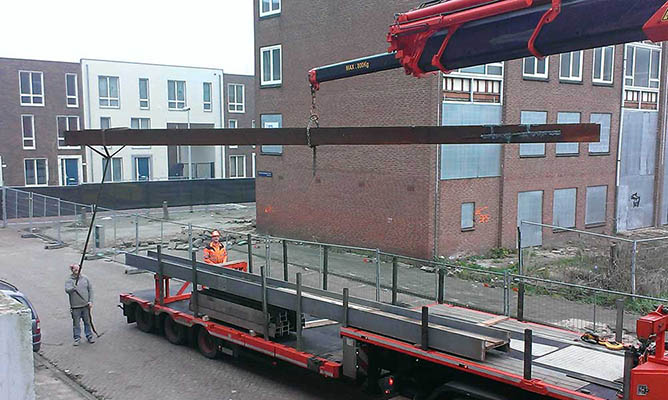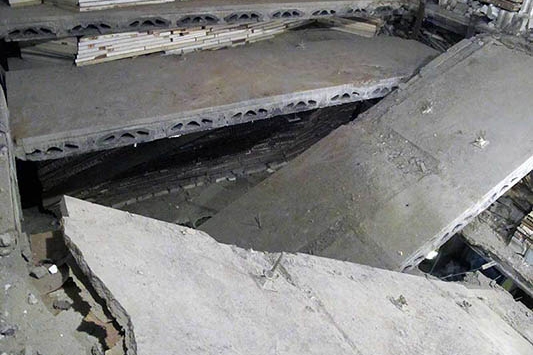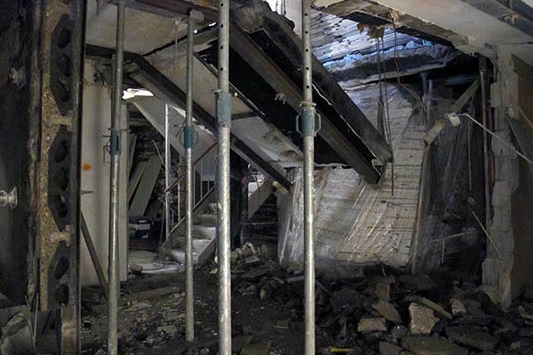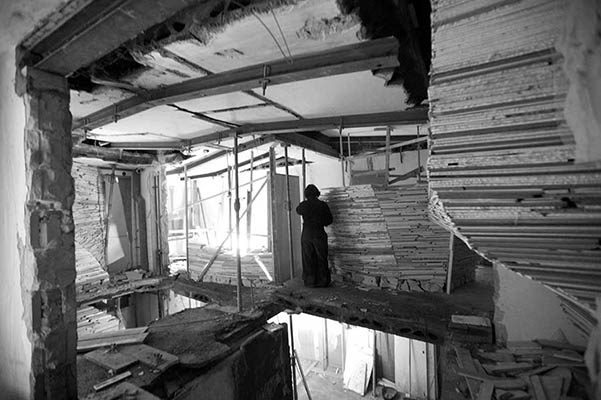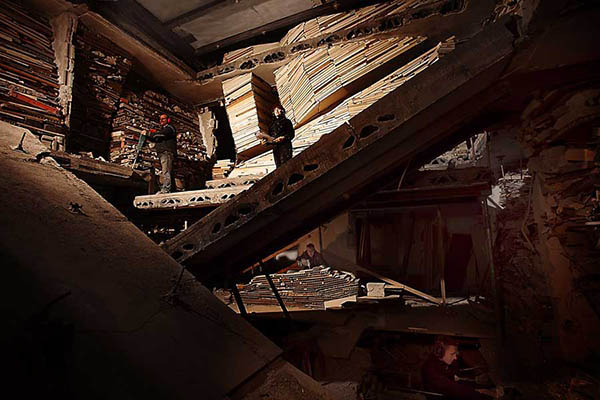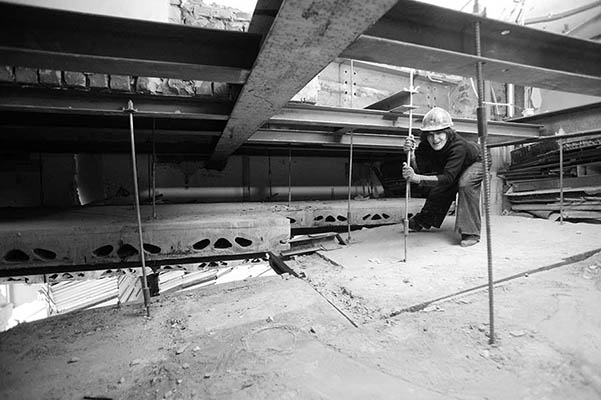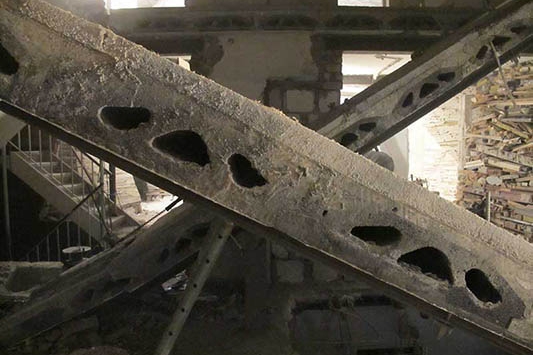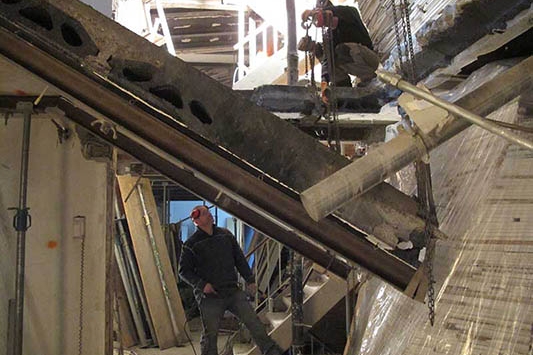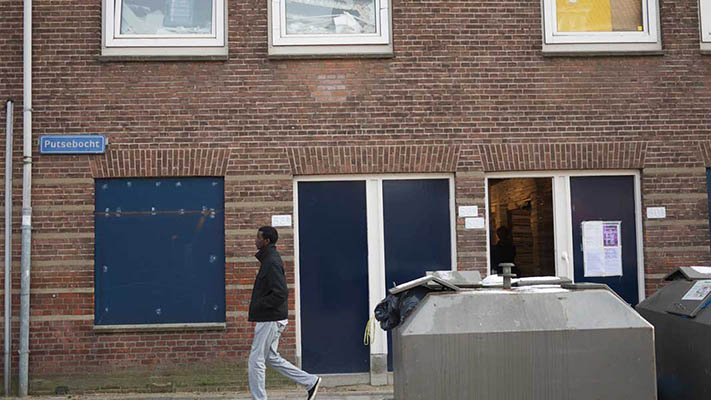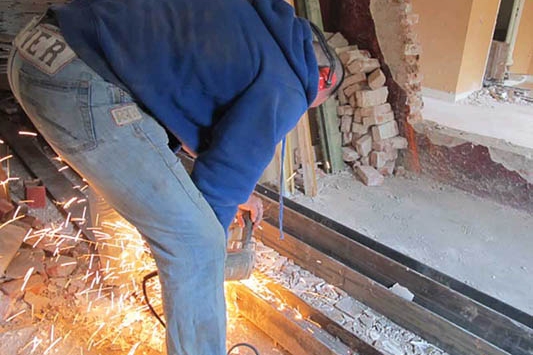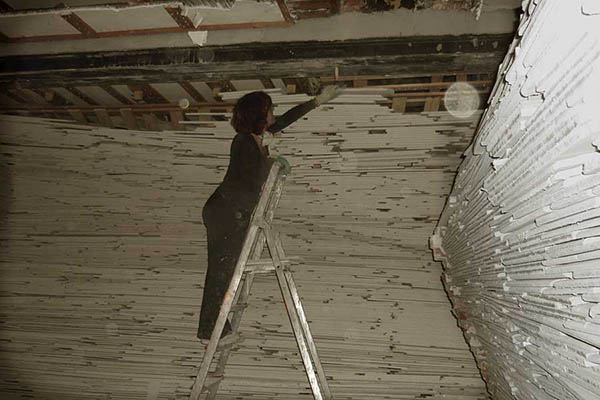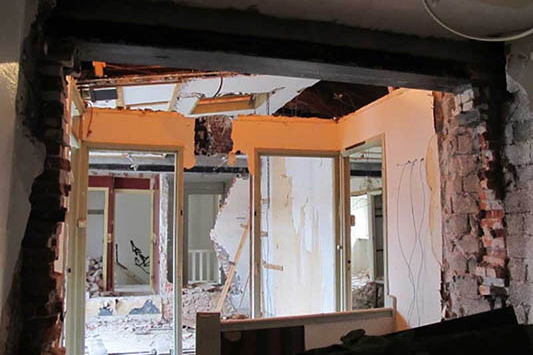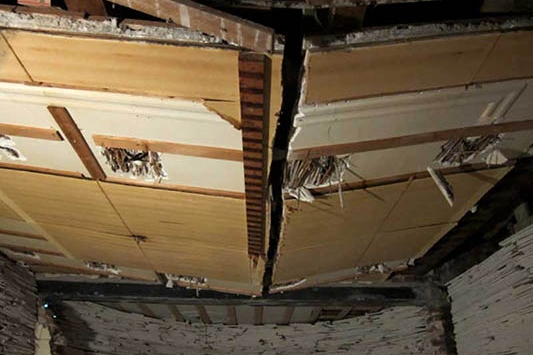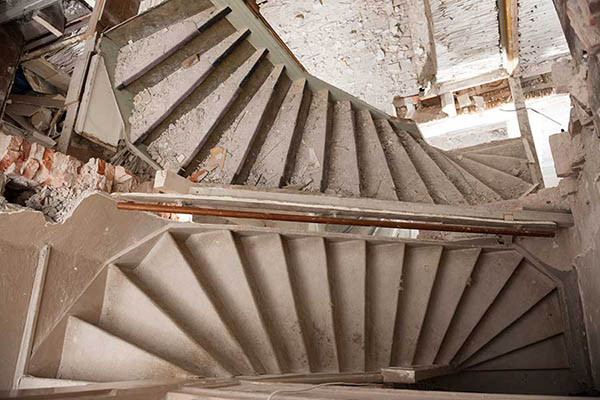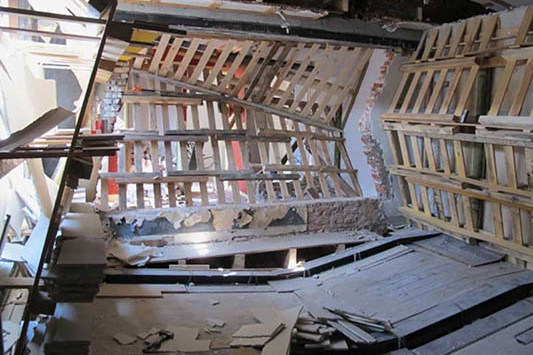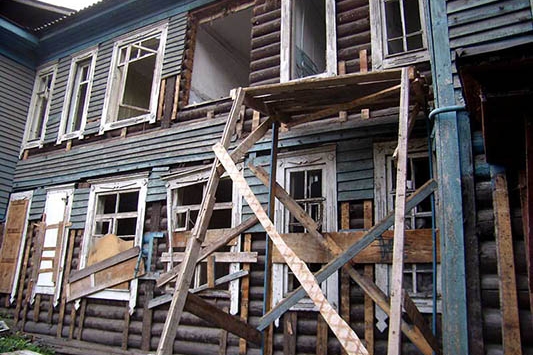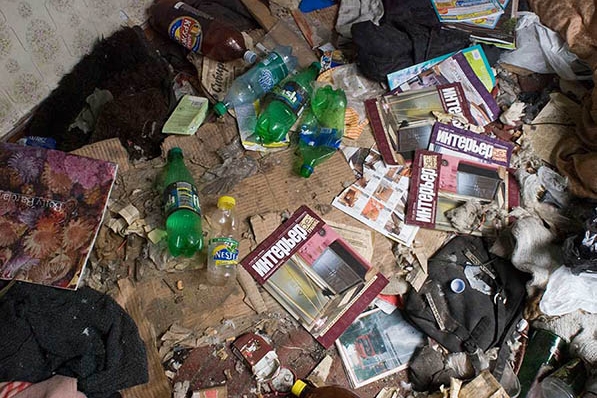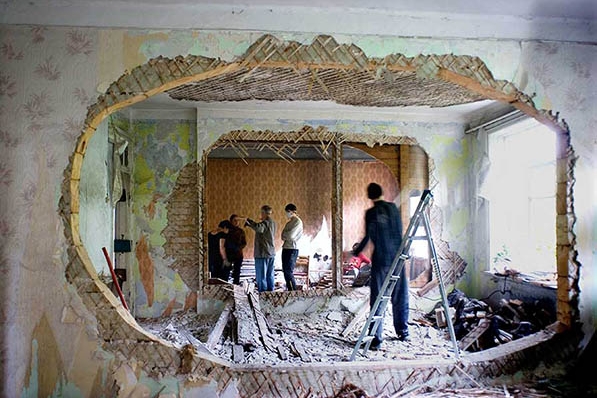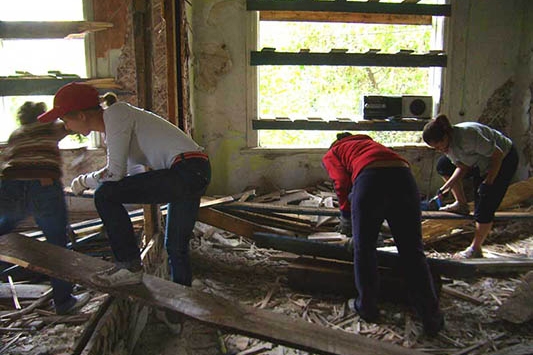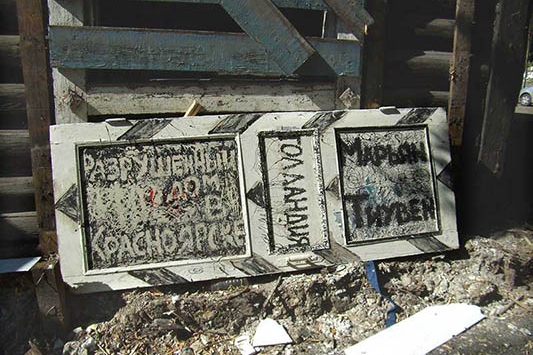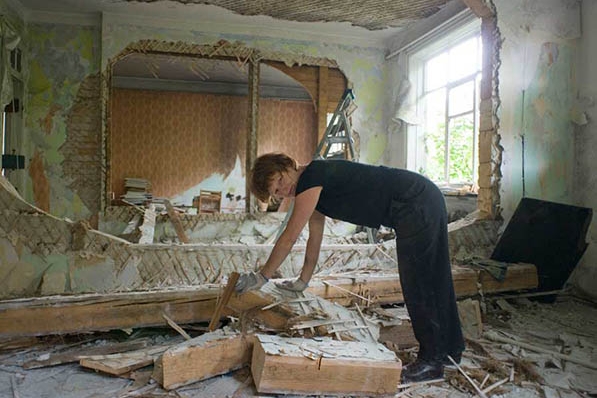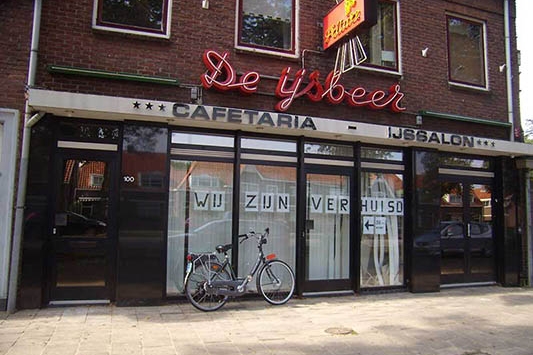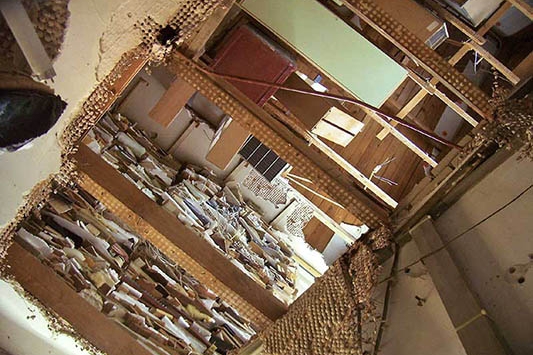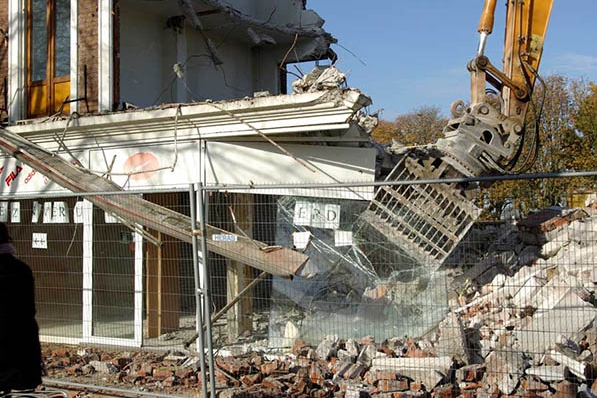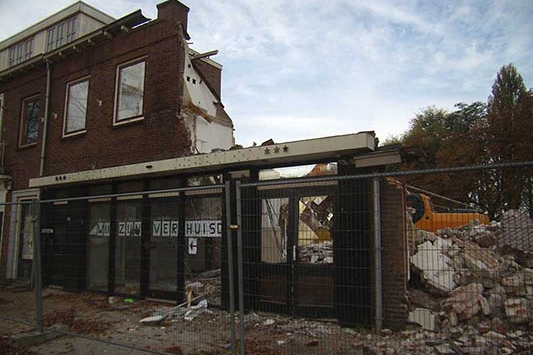Process-photos of seven architectural installations in the Destroyed House-series
A building as sculpture
Large-scale architectural installations in buildings that are subsequently demolished, are central to my work. Autonomous photo pieces are created on the basis of these installations.
Next to the Destroyed House –series I realize installations in the Archive-series; until now 22 installations.
In both series the great diversity of materials used produces a wealth of textural qualities that refer strongly to seventeenth—century Dutch painting.
Until now I realized nine architectural installations:
Destroyed House / Verwoest Huis (2008), located in a former snackbar/ livinghouse (1950) in ‘s-Hertogenbosch
Destroyed House Krasnoyarsk / Verwoest Huis Krasnoyarsk (2009), located in a 24-room wooden communal building in Krasnoyarsk, Russia Destroyed House Piet Mondriaanstraat / Verwoest Huis Piet Mondriaanstraat (2010/2011), located in six four-room apartments in a concrete (1960) building of social housing compagny Alliantie in Amsterdam
Destroyed House Bloemhof / Verwoest Huis Bloemhof (2012), located in 5 four-roomed houses (1910) owned by housing corporation Woonstad Rotterdam
Destroyed House Op Noord / Verwoest Huis Op Noord (2014) in a block of flats (1960) owned by housing corporation Rochdale in Northern Amsterdam Destroyed House Leiden /Verwoest Huis Leiden (2015), located in a row of a row of four dwellings (1611 and 1901) to facilitate the extension of the Museum De Lakenhal Leiden
Destroyed House Gaza/ Verwoest Huis Gaza (2016/2017), located in a bombed family house in Khan Younis/ Rafah, Chazia
Destroyed House Rencontres D’Arles / Verwoest Huis Rencontres D’Arles (2019), a significant part of the 50th edition of Rencontres de la Photographie in Arles (FR), located in a centuries-old commercial building.
Destroyed House KYOTO / Verwoest Huis KYOTO (2020), located in two traditional Japanese townhouses (machiya), a significant part of KYOTOGRAPHIE, an annual photographie festival in Kyoto (JP).
There is only a short list of artists who cut into buildings, artists who perforate buildings. Gordon Matta-Clark is a pioneer of the transformation of architecture into sculpture. Richard Wilson and Urs Fisher are two other artists who sometimes use this medium. For the rest there is only a conspicuous silence.
In my work the constructive force of building and the force of destruction and decline go hand in hand. To me, the polarity of construction – destruction, falling – standing, order – chaos is an essence of the human condition. A diabolic conflict. Dostoyevski argues that overcoming this polarity is beyond human power.
All my life I have felt great engagement with the excesses in human condition. Holocaust, Gulag, slavery, colonisation, they are not incidents, but among the many others main points in human history. The excesses of violence and their manifestations in the human conditions are fundamental to my work.
While my installations are artistically autonomous, the historical, political and social context of a country in which I choose to build/create my installations is essential to me: a mutual reinforcement between the installation and its context.
In my installations, these forces become manifest in monumental constructions. Floors have been tilted or cave in; walls have been broken out partially or completely. Floors drop straight down (becoming walls) or fall to form a diagonal cross. The destructions applied are the starting point for the construction of a new artistic image using demolition waste from the buildings themselves. Stackings (that branch out through the building like a virus) cover all walls or have been carefully organized into architectural sculptures. Everything is both standing and tilted. A transformation of a building (and the waste materials) into a monumental mental experience, generating meaning and beauty. Beauty that simultaneously contains pure order and chaos / the horrendous.
In her essay, Wilma Sütö argues that in my Destroyed House-series it is the psychology of the house, the mental inner space, the subconscious of the architecture that is excavated. My installations generate new architectural, social, mental and artistic perspectives in the given context.
Both the photo-works in the Destroyed House- series, and also in the Archive- series, have, beside a raw visual language of chaos, demolition and destruction, a highly abstract, minimalist character.
The great diversity of materials used produces a wealth of textural qualities that refer strongly to seventeenth—century Dutch painting.
The architectural installations can be considered room-filling still lives: still life also translates as ‘still alive’. After a disaster, man gets back on his feet. An everlasting movement.
The polarity construction destruction as an overall theme in my work can be interpreted in an art-historical perspective (the vanitas motif, memento mori), but has religious, social and philosophical connotations as well.
After having been opened to the public (3,000 – 5,000 visitors), my installations are demolished too, after which I prepare for the next ‘dead’ building– until that building is destroyed too. Everything ends and everything starts again. My work is a movement, just like history is.
Each project is preceded by intensive consultation with the owner (developer, housing association or local authorities), officials of the municipality concerned (regarding the environmental or public licence), constructor (construction report) and contractor.
My work is closely linked to two disciplines: architectural installation and photography. Two realities, each with their own quality and imaginative power. The autonomous photo-works are created on the basis of an authentic concept, with the physical reality of the installation being maximized. Most photographers take a photo, in my work photos are constructed.
Ludo van Halem, curator of twentieth-century art at the Rijksmuseum Amsterdam, inaugurated the fifth architectural installation of Marjan Teeuwen, Verwoest Huis op Noord (Destroyed House Op Noord).
‘Marjan Teeuwen’s architectural installations possess a complex beauty, emanating from a master hand completely controlling the brutal and destructive power of the wrecking ball. It is this master hand that causes destruction to reverse into its opposite and expose the raw beauty of the debris. The awe-inspiring forces of building are exposed in a monumental construction. Floors are tilted and threaten to slip away completely into a breathtaking abyss; walls have been torn away partly or entirely, drop straight down or have been placed in a diagonal cross. Everything is on edge in an orgy of debris. After the initial impression of chaos a formal beauty reveals itself – call it abstraction – created by a far-reaching intervention into reality. Lumps of debris and piles of waste, some piled up in certain shapes, transform the tarnished building into a monumental still life. In this construction, destruction has been temporarily halted and the spectator is emphatically confronted with the failure of all that is human. Just like ourselves, Marjan Teeuwen’s architectural installations will eventually turn to dust, temporary as they are. In that sense they can actually be interpreted as still lives, presenting us the ‘memento mori’ as a Vanitas, but at the same time as its reversal: an homage to the power of construction’.
My work is represented by Bruce Silverstein Gallery (NY).
Een gebouw als sculptuur
In mijn werk staan grootschalige architectonische installaties in gebouwen, die daarna worden gesloopt, centraal. Op basis van de installaties ontstaan autonome fotowerken.
Naast de serie Verwoest Huis, realiseer ik ook installaties in de Archief- serie.
Tot nu toe realiseerde ik negen installaties:
Destroyed House / Verwoest Huis (2008), Destroyed House Krasnoyarsk / Verwoest Huis Krasnoyarsk (2009), Destroyed House Piet Mondriaanstraat / Verwoest Huis Piet Mondriaanstraat (2010/2011), Destroyed House Bloemhof / Verwoest Huis Bloemhof (2012), Destroyed House Op Noord / Verwoest Huis Op Noord (2014), Destroyed House Leiden /Verwoest Huis Leiden (2015), Destroyed House Gaza / Verwoest Huis Gaza (2017), Destroyed House Rencontres D’Arles / Verwoest Huis Rencontres D’Arles (2019) and Destroyed House Rencontres Kyoto / Verwoest Huis Kyoto (2020).
Er is slechts een kort lijntje van kunstenaars die in gebouwen snijden, kunstenaars die gebouwen perforeren. Gordon Matta-Clark is de pionier van het transformeren van architectuur tot sculptuur. Ook Richard Wilson en Urs Fisher hanteren soms dit medium. Verder is het opvallend stil.

In mijn werk gaat de constructieve kracht van bouwen hand in hand met de kracht van verwoesting en verval. De polariteit opbouwen – verwoesten, vallen – staan, orde – chaos is in mijn ogen een essentie in de menselijke conditie. Een duivels conflict. Dostojewski stelt dat het overwinnen van deze polariteit het menselijke te boven gaat.
Mijn hele leven al ben ik uitermate betrokken bij de excessen in de menselijke geschiedenis. In mijn werk vormen deze excessen van geweld, en de manifestaties daarvan in de menselijke conditie, de basis.
In mijn installaties gaat de constructieve kracht van bouwen hand in hand met de kracht van verwoesting en verval. Ze manifesteren zich in monumentale constructies. Vloeren zijn scheef gezet of verzakken; wanden zijn er deels of volledig uitgeslagen. Vloeren vallen loodrecht naar beneden (en worden zo weer wand) of vallen in een kruis. De aangebrachte verwoestingen zijn uitgangspunt voor het opbouwen van een nieuw artistiek beeld, met sloopmateriaal afkomstig uit de gebouwen. Stapelingen (die zich als een virus door het pand vertakken) bedekken alle wanden of zijn zorgvuldig geordend tot architectonische sculpturen Alles staat én is scheef.
Een transformatie van het gebouw (en het sloopmateriaal) tot een monumentale, mentale ervaring, betekenis en schoonheid genererend. Schoonheid die raakt aan pure orde alsook aan chaos, het afgrijselijke.
De architectonische installaties tonen nieuwe architectonische, de sociale, mentale en artistieke perspectieven in de gegeven context.
Alles staat én is scheef
Zowel de fotowerken in de serie Verwoest Huis als de Archief- serie hebben naast een rauwe beeldtaal van chaos, afbraak en verwoesting, ook een sterk abstract, minimalistisch karakter.
De grote diversiteit aan gebruikte materialen levert een rijkdom aan stofuitdrukking op, die sterk refereert aan de Hollandse schilderkunst van de zeventiende eeuw.
De architectonische installaties zijn te zien als ruimtevullende stillevens; still life kun je ook kunnen vertalen als ‘nog steeds leven’. Na de ramp krabbelt de mens weer op. Een eeuwigdurende beweging.
Mijn installaties worden na openstelling voor het publiek, 3 tot 5000 bezoekers, afgebroken en ik maak me op voor een ander tot de sloop veroordeeld gebouw, totdat ook dat ook weer wordt vernietigd. Alles eindigt en alles begint opnieuw. Mijn werk is een beweging, zoals ook de geschiedenis dat is.
Aan elk project gaat intensief overleg met de eigenaar (projectontwikkelaar, woningbouwvereniging of gemeente), ambtenaren van de desbetreffende gemeente (inzake een omgevings- en publieksvergunning), constructeur (constructierapport) en aannemer vooraf.
Mijn werk is nauw verbonden met twee disciplines: architectonische installatie en fotografie. Twee realiteiten met ieder hun eigen kwaliteit en verbeeldingskracht. De autonome fotowerken zijn gerealiseerd op basis van een authentiek concept, waarbij de fysieke realiteit van de installatie gemaximaliseerd is.
Monnikenarbeid genereert een beeld van de kracht én de schoonheid van zowel opbouw als verwoesting.
Ludo van Halem, conservator twintigste-eeuwse kunst van het Rijksmuseum Amsterdam: De architectonische installaties van Marjan Teeuwen bezitten een complexe schoonheid, die ontstaat doordat een meesterhand de brute en verwoestende kracht van de slopershamer volledig weet te beheersen. Het is die meesterhand die de verwoesting in z’n tegendeel laat spreken en de rauwe schoonheid van het puin blootlegt.
In een monumentale constructie worden de ontzagwekkende krachten van het bouwen blootgelegd. Vloeren staan scheef en dreigen geheel weg te glijden in een adembenemende afgrond, wanden zijn geheel of gedeeltelijk weggeslagen, vallen loodrecht naar beneden of zijn in een kruis neergezet. Alles staat op scherp in een orgie van puin.
Na de eerste indruk van chaos openbaart zich een formele schoonheid – noem het abstractie – die tot stand komt door een diepgaande ingreep in de realiteit. Brokken puin en bergen afval, al dan niet in bepaalde vormen gestapeld, transformeren het aangetaste gebouw tot een monumentaal stilleven.
De verwoesting is in deze constructies tijdelijk tot stilstand gekomen en wijzen de kijker nadrukkelijk op het inherente falen van alles wat menselijk is. Ook de architectonische installaties van Marjan Teeuwen zullen, tijdelijk als ze zijn, net als wij zelf weer tot stof vergaan. In die zin zijn ze inderdaad op te vatten als de stillevens, die ons als vanitas het ‘gedenk te sterven’ voorhouden, maar tegelijk ook de omkering ervan: een ode aan de kracht van de constructie.

